FORESTRY & TIMBER NEWS
August / September 2024 Issue 124

August / September 2024 Issue 124























































































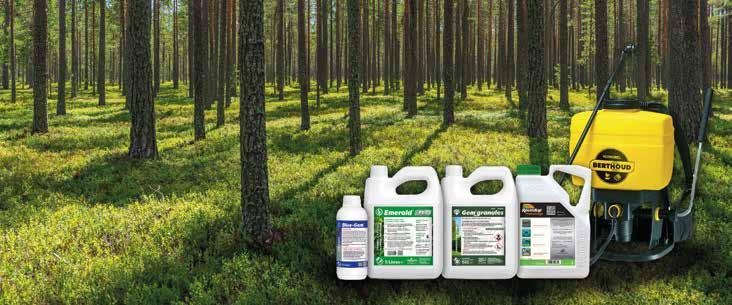





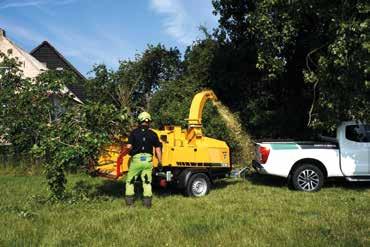


22 Bark beetle breeding galleries discovered on stressed Sitka in West Sussex
24 Training Programme aims to upskill and expand contractor workforce in Wales

54 Roger Fitter MBE: The ‘Father’ of the APF
the map
Confor welcomes call for urgent action on tree planting
Corrected report on Scottish Forestry timber transport boost
Member update: Turn of the seasons Change of address for Confor HQ
Confor hails ‘remarkable’ new
on forestry and wood’s
Confor Awards 2024:
seeds of knowledge
Scotland’s rainforest strategy aims to strengthen partnerships
ICF launches first-ever UKFS e-learning programme 25 Businesses needed to mentor new starts to the industry 26 Certification Considerations
29 No indication of delay to EUDR 62 Seeing wildlife from new heights 71 Laurent Bienfait Woodlands Services celebrates 100 million tree milestone
73 Time for more trees please 79 Julian Evans receives Gold Medal for outstanding contribution to Forestry
30 Adopting mechanical solutions
2024 PREVIEW 32 Bigger, better and more to do than ever before
57 New licensing scheme now in place for red grouse management
The Rebound of 2024: A Mid-Year Market Review
Border Woodlands Ltd: Digging deep for potential
Dusting off Dacia
A forester’s best friend
“Nothing about us, without us, is for us”
Lessons from three pictures
EDITORIAL

STUART GOODALL CHIEF EXECUTIVE, CONFOR
Labour is in power at Westminster and already the left of the party has rebelled against the leadership with seven MPs having the whip withdrawn for six months. While rebellion in the Labour ranks is nothing new, the Party’s overwhelming focus on economic growth is.
It won’t be easy for Labour to deliver growth quickly, however. It cannot simply be turned on like a tap, and that time-lag means Chancellor Rachel Reeves will face a big challenge in balancing the books, putting financial pressure on departments like Defra and their grant support for forestry.
On the other hand, this pressure and policy focus could provide greater scope for planting and woodland management initiatives that promote growth, and that can be delivered at lower cost to the public purse.
Steve Reed, who was Labour’s shadow Secretary of State, is now in charge at Defra while shadow forestry minister Toby Perkins has lost out to Mary Creagh. I met Ms Creagh when she was shadow Secretary of State at Defra and look forward to working with her again.
Mr Reed and his Defra colleagues Emma Hardy and Baroness Hayman met with us at last year’s Labour conference, and we will again be at the Party conference this year. With huge pressure on departmental budgets, a strong desire for growth and a need still to
Confor is a membership organisation that promotes sustainable forestry and wood-using businesses. Confor members receive Forestry and Timber News for free as part of their membership. For more information on membership, visit www.confor.org.uk/join-us
Past issues and articles can be accessed online at www.confor.org.uk/news/ftn-magazine
Non-member subscriptions: £75.07/(£80.85 overseas) Contact FTN@confor.org.uk
Forestry and Timber News is published by Countrywide Publications on behalf of Confor.
For advertising, contact Danny Lewis 01502 725858 danny.lewis@micropress.co.uk

Stuart Goodall
Chief Executive T: 0131 240 1416 E: stuartg@confor.org.uk

Andy Leitch
Deputy Chief Executive M: 07881 510171 E: Andy.leitch@confor.org.uk


Eliza Hibbins-Cline Marketing eliza@confor.org.uk
Eleanor O’Neill
Communications Manager M: 07918 255930 E: eleanor.oneill@confor.org.uk
tackle climate change there will be a lot to talk about.
As always, I’d encourage members to contact their new MPs and invite them to visit and learn more about the industry. Confor can help with this, so please just get in touch.
It will be a busy and uncertain year in politics. The ructions in Welsh Labour will see Vaughan Gething replaced by Eluned Morgan as First Minister and in Scotland the new leadership team of John Swinney and his deputy Kate Forbes hardly had time to sit down in their new offices before the general election campaign was announced. Both governments now have reasons to reflect on their parties’ priorities and with a Westminster budget due on 30 October 30, they’ll have to revisit their own future budget plans in a few months’ time – as will Northern Ireland.
I was pleased to arrange a visit for Kate Forbes to West Fraser’s mill near Inverness in July where she launched the latest report on the scale of the industry in Scotland – over 34,000 jobs and a £1.1 billion contribution to the economy.
These impressive figures, significantly up from the last report, demonstrate the potential of the industry – a potential that ministers across the UK can help realise if they work with us constructively, delivering the growth they all want to see.
…and without the backbench rebellions!


John Bruce
National Manager for England john.bruce@confor.org.uk
April Armstrong
National Manager for Scotland april.armstrong@confor.org.uk
Elaine Harrison Manager for Wales elaine.harrison@confor.org.uk
Printed by Micropress Printers Ltd office and editorial office Lady Lawson Street, 9DR www.confor.org.uk


Richard Hunter
Technical and Industry Support Manager richard.hunter@confor.org.uk

info@confor.org.uk
@forestsandwood on Twitter for news and updates


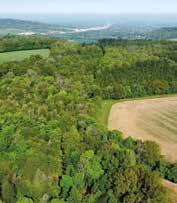



SHAW HILL NORTH WOOD
Coulter, South Lanarkshire
67.21 Acres / 27.20 Ha
Young, well-established plantation comprising mainly p2019 Sitka spruce alongside Scots pine, Douglas fir and Norway spruce. First thinning in around 10 years.
Offers Over £340,000 Sporting and mineral rights owned and included

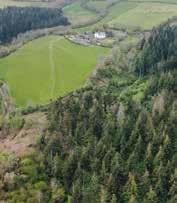
Lot 1: Bruckton Wood - 13.20 acres

Mature Douglas Fir & European Larch. p2018 mixed broadleaves. Good access.
Guide price £95,000

COED RHIW SAESON
Llanbrynmair, Powys
25.50 Acres / 10.32 Ha
p1960s Sikta Spruce, Douglas Fir & Western Hemlock ready for harvesting. Good access. Long leasehold.
Guide price £205,000 Sporting rights owned and included


Guide price £195,000
Guide for the Whole, £290,000 Sporting rights owned and included
HARROT HILL WOOD
Armaside, Cockermouth, Cumbria
63.43 Acres / 25.67 Ha
A maturing conifer wood situated in the Lake District National Park. Predominantly Sikta Spruce with Douglas Fir and Japanese Larch. Good access.
Guide price £415,000 Sporting rights owned and included


BELL COPPICE
Far Forest, Cleobury Mortimer, Shropshire
203.45 Acres / 82.33 Ha
A premier, productive, well-managed Oak woodland. Timber ready to harvest. Good access.
Guide price £1,690,000 Sporting rights owned and included


Tree care and recycling machine distribution specialists Vermeer UK measure up the modern market for the two designs.
Going back a good number of decades, the differences between drum and disc were more distinct, predominantly due to a lack of development of systems in place: many manufactures were still relatively new to the game and the household names now on the market did not even exist.
The tree care market in Europe and the USA was also undergoing a rapid development and the market needs fluctuated along with the financial status of the average customer. In the 1970s and 80s, the drum chipper was quite prevalent (though generally simple in concept and design) and the disc chipper was just starting to make itself felt on larger scale, with the capacity generally being limited to the smaller dimensions in Europe.

CAD/CAM analysis, combined with the ever-higher demand for more capacity on a reduced footprint, drum chippers are working their way back into mainstream tree care. They are definitely now the dominating design in the under 6-inch domestic use class that previously was the playground of discs.
Including everything from formative pruning and remedial work, to crown reduction and chip to waste carried out by smaller crews.
However, in the world of very large log and tree processing, the situation was reversed.
As the tree care market advanced, in large part in the UK due to the storm of 1987, customer needs became more focused and specific. The design of
So, with that all being said, what are the pros and cons of disc and drum style cutters in today’s market? Answers lie in market need itself, rather than a predetermined machine capacity - the customer does not want the chipper, but requires the material disposed of efficiently.
PROs

• Generally compact design allows engine location to be either in-line (narrow trailer/ tracked machine) or to side (suited for zero tail swing turntables) for wide stance and stability.
• Disc design is relatively simple, robust and cheap to manufacture, thus reducing purchase price.
• Disc design combines cutting and discharge in one compact item, for good chip throw for reduced system complexity.
• Current state-of-the-art discs do not require shear-bar adjustment when cutter knives are changed.
• Disc design when cutting vertically down generally produces very good chip quality.
• Vertical down cut design (between rear bearing and outside of disc) allows feed roller very close to disc to significantly lower occurrences of oversize chips and infeed blockages.
• Simple cutter housing design lends itself to good access for changing cutter knives.
• Smaller disc designs can be made to have tight clearances between shear-bar and cutter knives for effective leaf cutting and reduced discharge blockage in larger leaf species.

CONs
• Requires relatively large cutter housing that will make up a significant percentage of machine size, weight and cost.

• Infeed capacity is greatly limited by disc diameter in vertical down cut designs.
• The opening in the cutter housing (between feed roller and cutter disc) can sometimes be limited due to housing design and bearing location, leading to potential blockage issues.
• Wide letter box designs (cutting horizontally) have a strong tendency to create poor chip quality, especially when knives are no longer sharp.
• Wide letter box designs place the cutter disc rear bearing in the infeed, forcing the infeed rollers further away from the cutter disc, creating higher occurrences of oversized chips (due to sudden feed surge when end block is grabbed).
• Energy consumption by the discharge air paddles is generally lower than discs.
• Disc cutters will generally perform poorly in chip quality and production once the knives have become dull.
• Cutter disc bearings are heavily loaded axially, having a very negative impact on reliability and service life, especially if correct greasing is not carried out.
PROs
• Drum design (and associated cutter housing) is generally significantly more compact than a disc design for the same nominal capacity - leading to more space and weight being available for other systems.
• Drum design lends itself extremely well for a very wide infeed capacity making it ideal for wide brashy material.
• A generally higher RPM produces better chip ejection and less re-cutting of material.
• Drum chippers have the bearings at the side and have limited axial loads leading to generally higher reliability and service life.
• Drum cutter housing and infeed housing designs can be very compact and simple, thus relatively cheap compared to disc designs.
• Drum designs can provide very good chip quality when the shear-bar is located closer to the centre line of the drum.
• Very suitable for large volumes of large diameter material due to the heavy robust drum design.
• Drum chippers will still be able to process reasonable volumes of material with dull knives, with acceptance that chip quality will suffer and in wet material the occurrences of discharge blocking will increase.
• Engine location needs to be parallel to cutter drum rotation, thus in general must be inline – excepting compact petrol engines, it is not practical to have the engine at the side for turntable use.
• Drum designs tend to be more complex and thus more expensive than equivalent disc designs, resulting in a more expensive machine.
• Smaller drum designs require additional air paddles and high RPMs to effectively discharge material, resulting in higher noise and energy use compared to similar capacity discs.
• Compact drum designs can be more susceptible to discharge chute blockages with wet leafy material.
• Changing knives (to sharpened set with smaller dimensions) requires adjustment of shear bar – this can be time consuming for
the customer and access might be limited.
• Larger drum chippers tend to be heavier and longer than their disc equivalents.
This covers dead wooding, frequent section felling, and the bigger clearance and chipper jobs undertaken by large companies and dedicated chipper teams.
PROs
• Disc designs lend themselves to larger turntable chippers that can be used in street tree applications.
• Large disc designs are generally cheaper compared to equivalent capacity drum machines.
• Disc chippers have very good discharge for a relatively lower sound output.
• Large letter box infeed dictates large disc and cutter housing. A practical upper limit is around 12 inches capacity, after which the machine is generally too big for its capacity.
• Large diameter discs have high energy requirements due to the discharge of air paddles.
• Disc chippers are not as suitable as drums for large volumes of large diameter material due to chip processing through the disc and overall infeed opening dimensions.
continued from p7
• Axial loads on cutter disc bearings become significant, dictating their size, which increases costs and reduces space available for infeed opening, feed roller location, etc.
• Not really suitable for grapple feeding large logs and trees due to overall throughput and aforementioned bearing considerations.
• Very difficult to include any form of chip size control (screens, etc.) without significantly reducing overall performance and energy efficiency.
PROs
• Large infeed capacity relatively simple without compromising cutter and housing size, leading to a relatively compact machine (for its class) compared to disc equivalent.
• Generally, above 12 inches capacity, drum designs are the only practical option due to machine size.
• Due to infeed roller location and opening between roller and drum, ideally suited for processing large material with minimal infeed blockages.
• Relatively straightforward to add chip quality control systems, although additional discharge blowers may be required, depending on size of system.
• Bearings see relatively little axial loads and the design is ideally suited for grapple feeding large branches and trees.
• Cutter and infeed housing is relatively simple in design and thus easier and cheaper to make in robust form to suit the larger material being processed.
CONs
• Chip quality control systems generally require addition blower capabilities (disc with paddles or equivalent) that adds additional cost, weight, system complexity, energy consumption and noise compared to a similar capacity disc chipper.
• Generally, more expensive than the equivalent capacity disc chipper.
• Not suited for turntable design due to overall engine and system length.
No review will ever be exhaustive due to the nuanced and varied nature of forestry work. Many of the above pros and cons will apply across categories and designs. However, as the scale of work dictates volume processed and efficiency over compactness and purchase cost, drum chippers will always be favoured for largescale work.
The full range of wood chippers offered by Vermeer provide machine solutions for jobs of any size. Visit www.vermeeruk. co.uk or email sales@vermeeruk.co.uk to find a chipper that works for you.

In the wake of an unsurprising, yet no less seismic, General Election result, Policy & Public Affairs Officer Jon Garson contemplates the implications for forestry and wood under a Labour government.
So, after all the speculation, after all the pundits and airtime given over to this possible outcome and that possible outcome, and the maybes and you never knows, we now know.
The result was what we all foresaw; a 1997 reminiscent, historic Labour victory complete with a whopping 411 seats (since reduced to 404 due to the suspension of 7 MPs for supporting an SNP motion against government wishes).
Upon taking office, Labour wasted no time in looking at the books and discovering a £22 billion fiscal black hole in current spending. While a fiscal challenge was expected for any incoming government, the scale of the deficit does represent a considerable hurdle for the government if it wishes to stick to its own rules while making the investments it committed to across a wide range of public services.
The Chancellor’s announcement represents a sharp jolt of reality and could see a very short honeymoon period for the new government. The newly appointed Rachel Reeves took no time in announcing £6 billion in savings from some politically sensitive sources, including cutting the winter fuel payment for pensioners not in receipt of certain state benefits, and scrapping a range of infrastructure projects. We also know from her statement that more cuts will be necessary, and it seems clear nothing is off the table and taxes are likely to rise, depending on revised growth forecasts.
The Government has boxed itself in
by ruling out personal, business, VAT and corporate tax rises. Closing loopholes and ‘non-dom’ changes will take time to have an effect, and the receipts have already been committed to specific programmes. As a result, we can expect there to be increases to capital gains and inheritance tax in the Chancellor’s first budget in the autumn, with potentially more to come.
And what does this all mean for public spending in our sector?
Public finances will be under incredible pressure, departments are being instructed to cut administrative and communications budgets, and a full-scale spending review is underway. This means every pound of government money will face scrutiny and intense pressure from competing interests – environmental NGOs have already produced a report calling for an annual investment of £5.9 billion to support nature-friendly farming.
For Confor, we will be engaging with government to ensure that they recognise that funding to our sector provides a tangible return on investment in economic, environmental and societal terms, and that economic growth can be secured without spending money. For example, by promoting the greater use of home-grown wood.
When government is looking to achieve numerous outcomes, there is no pound better spent, that will produce a better return, than in planting a tree that produces wood and locks up carbon, or by enabling more woodlands to be managed profitably and sustainably.


Experience unprecedented performance with STIHL‘s extensive range of professional grade battery-powered tools for commercial users.
IPX4 certification lets you continue working with confidence in the rain. Long-lasting smart batteries deliver consistent power throughout the whole battery charge. And fast chargers deliver quick recharge times so you and your tools are always ready for the job.

The latest progress report from the Climate Change Committee highlights the priorities the new UK Government needs to take on board to tackle climate change. David Lee reports.
Confor welcomed the Climate Change Committee’s (CCC) 2024 Progress Report to Parliament, which points to the critical importance of accelerating tree planting across the UK to meet our climate goals.
The report’s findings were timely as the priorities set out by the new Labour Government align closely with Confor’s long-standing position that increased woodland creation is essential for carbon sequestration and achieving net zero targets. Confor was particularly encouraged by the CCC’s emphasis on the need for urgent action, recognising that the trees planted in the next few years will have the greatest impact on meeting net zero by 2050.
The key points that Confor endorsed in the report include:
• The call for an urgent doubling of tree planting rates across the UK to deliver 30,000 hectares a year on a sustained basis.

• Recognition that woodland creation is currently significantly off track and requires immediate attention.
• The recommendation for both the UK and devolved governments to provide sufficient funding and delivery support for tree planting.
• Acknowledgment of the need to address non-financial barriers, particularly around resource and capacity.
Confor Chief Executive Stuart Goodall said: “The latest CCC report is very timely and underscores what Confor has been advocating for years - that tree planting is a critical tool in our fight against climate change and that we’re not doing enough of it. New ministers have been appointed at Defra and it is vital that Secretary of State Steve Reed leads from the front in ensuring the CCC’s recommendations are accepted, and that urgent action is taken to get us back on track.
“Increased woodland creation will help deliver the Labour Government’s priority
objective of growing the economy. Fast growing trees will lock up the most amount of carbon by 2050, and they stimulate investment in jobs and wood manufacturing. This expanding industry has real potential for further growth as evidenced by a new report published in Scotland last week that shows the industry has grown significantly and contributes £1.1 billion to the Scottish economy and supports more than 34,000 jobs.
“With economic growth the number one priority of Keir Starmer’s government, the time to support an industry that not only provides high quality jobs in rural areas but also fights damaging climate change is now.
“The CCC’s report looks at all parts of the UK and identified that urgent action is required by the devolved administrations as well. With the new Government taking office earlier this month and signalling a fresh start with political representatives in Scotland, Wales and Northern Ireland, there is a real opportunity to move on from the missed opportunities of the last decade and give fighting damaging climate change through greatly increased woodland creation the political priority it deserves.”
Confor viewed the announcement in the King’s Speech about greater coordination with devolved administrations as an opportunity for the new government to address the CCC’s recommendations. Tree planting could serve as an excellent test case for improved policy coordination between the various UK devolved administrations in the critical area of climate change mitigation.
Confor looks forward to discussing the report’s recommendations in detail with the new Ministerial team at Defra. We stand ready to work collaboratively with all governments across the UK to overcome barriers and accelerate woodland creation as an urgent priority.
With this report providing a clear mandate for action, Confor calls on all UK administrations to heed the CCC’s advice by implementing the necessary policies and funding to significantly boost tree planting rates. The forestry and wood processing sector is prepared to play its part in the crucial national mission to combat climate change and create a sustainable, low-carbon future.

Euroforest are specialists in Arboriculture and offer a range of tree care and woodland management solutions to suit your needs:-
Mechanised Arboriculture
Tree Health Surveys
Tree Surgery
Site Clearance & Mulching
Hedge & Verge Maintenance
Tree Planting & Landscaping
Marketing of Timber and Biomass

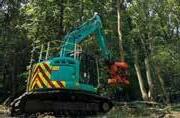
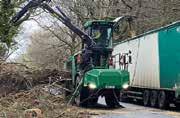




Ash Dieback and other tree diseases con�nue to spread at pace throughout the UK. It is an�cipated that up to 97% of all Ash trees could be lost. Ash and other species at risk are widespread in woodlands and roadside edges. This causes a considerable liability risk to landowners associated with falling trees, especially adjacent to footpaths, highways, and property. Early interven�on is always advised to minimise cost and maximise value.
Euroforest offer a tailored approach to suit all requirements. We use a range of specialist equipment, allowing us to safely dismantle any tree in any loca�on. All of our projects are professionally planned and managed from start to finish, enabling us to achieve and deliver the best results.
Our highly experienced team offer an industry leading Arboriculture service across the country. We lead the way in compliance and public rela�ons, seeing a gold standard through our cer�fica�on to ISO 9001 Quality Management Systems, ISO 45001 Occupa�onal H&S Management and ISO 14001 Environmental Management Systems.
Euroforest's specialist teams offer a bespoke service, from ini�al site appraisal through to comple�on and replan�ng. We offer a service that puts the landowner centre stage while always minimising costs and maximising any �mber revenues. If you wish to find out more, please visit our website or contact us via the below details.


Reres Wood – near St. Andrews 67.74 Hectares/ 167.38 Acres

A wonderfully located mature pine woodland with direct access to your own secluded beach providing breathtaking views over the River Eden and St Andrews Bay. Offers Over £500,000

Simon Hart FICFor, FRICS Sales and Valuation (Scotland) 07788 763 055 simon.hart@johnclegg.co.uk
We




e

Harry Graham Sales & Acquisitions (Scotland) 07787 221 422 harry.graham@johnclegg.co.uk
Email:

























In the previous £4m was Scotland.
While timber allocated Forestry in £2 million.
£800,000 projects which fragile rural or building traffic away
A further committed including the project, a three-year trial and a network of Regional Timber Transport officers across Scotland.

Amongst the new projects are:
• Dumfries and Galloway Council: 17 passing places to be added on a singletrack road (C102a) which is used by local people and timber lorries.
• Fountains Forestry: Creating a new route at Moss of Cree which will provide safe access and transport of timber at Lamachan and Carty Bridge on the C15W public road.
• Aberdeenshire Council: Improvements to a carriageway from Birsemore to Dinnet Bridge which is also a popular commuting route to several local forest businesses.
• Scottish Borders Council: Upgrading to the B6357 to improve the capacity of the road which is forecast to carry more than 800,000 tonnes of timber over the next decade.
• Highland Council: The U1019 Bohenie Road will see improvements to allow 45,000 tonnes of timber moved over the next 10 years.
The TimberLINK project operates around Argyll and Ayrshire using ships instead of timber lorries to move around 100,000 tonnes of timber to wood processors.
The three-year electric timber lorry trial
exploring how well two lorries can handle the logistics of moving timber around in the south of Scotland and Highlands.
The network of Regional Timber Transport Groups and the Timber Transport Forum will also continue to be funded. These groups and staff provide a critical liaison between communities, local authorities, the forestry industry, and Scottish Forestry to assist with timber transport issues.
The Strategic Timber Transport Fund pays for a contribution to the full costs of the projects, with the remainder being paid for by the applicant.
To date £86 million funding support for timber transport projects across Scotland has been invested over the past 25 years, realising projects worth £130 million through co-funding partnerships. This has helped 575 projects get timber to market whilst reducing the impacts of more than 1 billion tonnes of timber on communities and improving the environment.
‘£4m timber transport boost for Scotland’ was published on p56 of Forestry & Timber News June/July 2024. We apologise for any resultant confusion from our mistake.
Confor has officially vacated 59 George Street. For many it feels like the end of an era, while marking an exciting new chapter in the organisation’s history and growth.
We are pleased to announce that Confor is now headquartered within CodeBase, a business community for startups, scaleups, entrepreneurs and innovators.
Our new office is still located in the centre of Edinburgh, with easy access to public transport links and closer proximity to landmarks like Princes Street Gardens, Edinburgh Castle and the Usher Hall.
Please make note of the new mailing address: Confor, Argyle House, 3 Lady Lawson Street, Edinburgh EH3 9DR.

have enjoyed the season and have had spend time in woodlands before the weather rolls in! summer, the especially busy at shows. For those who Royal Welsh Show it was a delight to show was a positive new spot in the was a success! A big thanks to our members that sponsored and supported our business hub.
With the upcoming APF 2024, please be assured that all Members will be emailed their digital membership card. This allows one person free entry for all days of the APF. You must be able to show this card at the gate - no refunds will be available for members who forget their digital card.
If you require more tickets, you can buy them directly through the APF website here. If you have any questions regarding tickets or entry to the APF, please contact me at eliza@confor.org.uk.
Renewals for 2024-2025 membership will also be getting underway very soon. Invoices will be sent out on the first week of September: if you have any queries with your new invoice for the next membership year, please get in touch. We hope to have your continued support for the year ahead!
Welcome to our new Members: Scotland: Land Energy; Mr A Mccuish. England: Miss C Oreilly; Buck Hurst Wood; Anand Shine MCR Limited. Wales: Tirwedd Sustainable Garden and Tree Services LLP; Mr B Mackay
Contact Eliza on 07918 880285 or email eliza@confor.org.uk
National Manager for Wales, Elaine Harrison MICFor, sums up her first Royal Welsh Show in the driving seat for Confor.
The 2024 Royal Welsh Show welcomed over 200,000 visitors through the gates, reinforcing its position as one of the premier agricultural shows in Europe. This was my first year running the Confor Forestry Business Hub and I am pleased to say it was a success.
We enjoyed a steady stream of visitors with good visibility in a busy location for our Business Hub exhibitors.
Monday was a day of meetings including the First Minister’s Reception. I managed to talk with the First Minister and Cabinet Secretary for Climate Change and Rural Affairs about forestry’s role in Wales, as well as connecting with many Confor members and partner organisations.
Forestry Day brought a special buzz, and the tent was a veritable hive of activity. We had around 50 guests join us for the Foresters Breakfast, kindly sponsored by the Forestry Contracting Association Ltd, MWMAC Ltd and Iwan Merion Forestry. That number doubled for the muchanticipated forest buffet lunch sponsored by Bronwin & Abbey Ltd.
I attended the Ministerial round table with the Cabinet Secretary and other stakeholders, then took part in a forestry careers discussion with the Cabinet Secretary about STEM ambassador opportunities in the sector.
Timber was the key seminar topic of the day with Gary Newman of Woodknowledge Wales discussing increasing value, and Gail Merriman presenting an update on the Welsh Government’s Timber Industrial Strategy. ICF also hosted a talk on managing small woodlands and Forest Research’s Andrew Leslie covered short rotation forestry

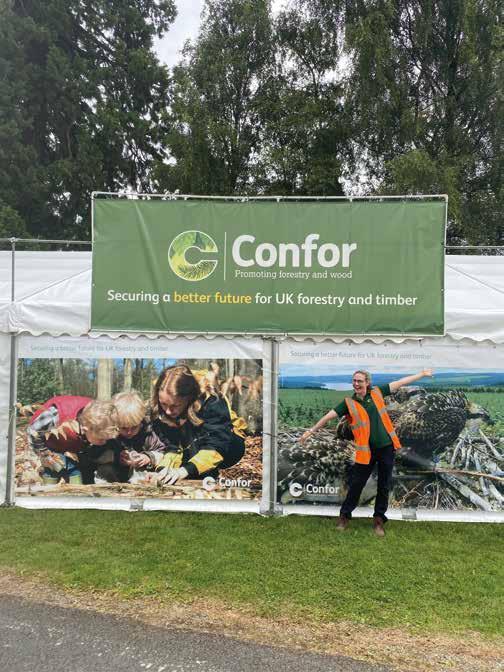
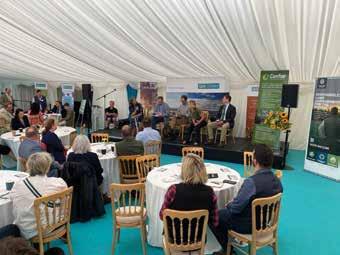
Connect and Tilhill.
from our panel members: Andrew Sowerby, Rob Yorke, Kate Bevan and Ross Murray.
As always, held the RWAS Woodland Awards of the prizes emotional one of Wednesday’s


SPONSORS


The need to effectively manage existing woodlands was a prevailing theme, as was a desire for landowners and users to work together on creating forests for the farmers to discussed difference in of economic making,
Confor Wales Chair Iwan Lloyd-Williams MICFor and I attended the Welsh Plant Health Meeting, as well as the recording of Radio 4’s Farming Today programme with Confor Wales Vice Chair Robert South MICFor MArborA.


Confor
The last day of the Royal Welsh Show, themed around Education, brought our final three seminars from FISA, the Squirrel Accord, and the Bangor University BioComposites Centre. We also hosted the RWAS Schools Competition.
This year’s Show has been exciting, exhausting experience. Thank supported event such showground












Maelor Forest Nurseries specialises in supplying UK-grown trees with superior genetics to improve growth, resilience and timber quality.
Biosecurity Conservation Innovation
Imported plants are the main pathway for invasive pests and disease; all the trees we supply are grown at Maelor throughout their life.
maelor.co.uk
Our seed orchards are home to some of the rarest and most valuable native tree species, as well as the trees that will shape the future of UK forestry. We are pioneering research into tree breeding and husbandry. Our state-of-the-art laboratory in Wales is the only one of its kind in Europe.
A sister company of Tilhill Forestry - the UK’s leading sustainable forestry and timber harvesting company
We are stocked for the season ahead
Green-tech offer a huge range of shelters, guards, spirals, stakes, canes and sundries, and is the largest official distributor of Tubex shelters.
We’re consistantly at the forefront of innovative and sustainable tree planting solutions, with products such as Woodland Grow, a new natural fertiliser derived from woodland soils. With products in stock and ready for dispatch, we’re here to help with fast and flexible delivery options, competitive pricing and excellent customer care as standard. Contact us today!




Order today by calling 01423 332100 or order online at www.green-tech.co.uk sales@green-tech.co.uk @greentechltd @greentechuk green-tech-ltd

200 forests certified
100,000 hectares certified



500,000T timber harvested annually


We provide certification for 20 forest management companies 30 individual estates




An independent FSC® and PEFC certified forestry group scheme for forest managers throughout the UK.



07970 388940 phil@forestcertification.org.uk
07852 726471 simon@forestcertification.org.uk
www.forestcertification.org.uk

Contact UKFCG for certification advice and a quote


Last month, Scottish Forestry published a new report on the Economic Impact of Forest Based Activities in Scotland, following its launch by Deputy First Minister Kate Forbes during a visit to West Fraser in Inverness.
New figures from an independent study demonstrate that the economic impact of the forestry and wood sector in Scotland has continued to grow, revealing that the industry is worth £1.1 billion and employs more than 34,000 people.
Confor’s Chief Executive said the figures were a “remarkable” achievement in the face of major challenges and reflected growing demand for wood as a low-carbon material.
The independent study says more than 34,000 jobs are supported by the forestry and wood sector in Scotland - compared to 25,867 in the last study, published in September 2015. The economic impact
visit to West Fraser’s Dalcross facility July.
“Scotland’s forests and woodlands a sustainable powerhouse,” she stated. “They support a growing number of many in rural communities, and make an increasingly important contribution to Scotland’s economy.

“The Scottish Government is committed to expanding our forests and woodlands and ensuring they continue to provide multiple benefits for Scotland.
“Scottish Forestry is working closely with the sector to maximise future woodland creation with the resources available. Scotland is creating nearly 75 % of all the new woodlands in the UK and last year saw the highest level of woodland creation in 34 years.”

The statistical exercise began in 2020. During the pandemic, the industry experienced huge demand as wood was designated as a key resource in the fight against Covid, providing building materials for the emergency hospitals that were constructed and moving food and pharmaceuticals around on pallets.
Homeowners also drove demand as they spent money on their homes and gardens.
Confor CEO Stuart Goodall commented: “It’s good news for Scotland that this increasingly important industry has experienced such strong growth. To have increased levels of employment by 30% and annual economic impact by more than 15% is remarkable in the face of unprecedented economic challenges.
“It is testament to the resilience and ingenuity of the people working in the sector, and the growing demand for wood as a low carbon material.”
Forest Research statistics published in June showed that more than 15,000 hectares of new forests were created in Scotland during the 2023/24 planting period. This included a healthy conifer component of 8,720 hectares, alongside 6,320 hectares of broadleaf planting.
Scottish Forestry’s Head of Economics Pat Snowdon said: “Forestry is often called a ‘hidden industry’ because there are so many small businesses placed in remote areas working throughout the sector.


“This comprehensive economic study covers a multitude of forestry activities and their important contribution towards boosting the economy of Scotland.
The findings provide a snapshot of the different ways forestry generates income and employment across Scotland.”
“It’s highly appropriate that the
Deputy First Minister announced these positive new figures at Dalcross, which has seen the largest investment in any UK wood processing site over the last decade,” added George Webb, European Purchasing Director for West Fraser.
“Around £200 million has been invested
This new report reveals that Scotland’s forestry contributes £1.1 billion to the economy each year and supports more than 34,000 jobs. Compared to the earlier 2015 publication, this shows that we have increased our levels of economic impact by 15% and increased employment by 30%.
Both figures are remarkable achievements for the sector.
An economic breakdown shows that the overall value is derived from the following income streams:
• £99m from Forestry Activities
Supply Chain
• £394m from Primary Wood Processing
• £385m from Forestry
• £252m from Tourism
Of a total of 34,140 jobs, there are an estimated:
• 10,380 in Forestry
• 1,940 in Forestry Activities Supply Chain
• 3,690 in Primary Wood Processing
• 18,130 in Forestry Tourism
These statistics, combined with further information in the report, also highlight Scotland’s thriving Forestry Tourism industry and the positive impact that our sector has on outdoor recreation in Scotland.
It should also be noted here that report uses information captured by Forestry and Land Scotland (FLS) based upon people visiting the public forest state to provide the economic data. Our private forests also attract high numbers of local people using our forests for leisure and recreation, something that is not currently recorded. The report does acknowledge that the reported figures do not include the significant non-monetisable benefits that forests bring to Scotland’s communities.
This report comes at a time when we are also celebrating Scotland’s achievement in creating nearly 75% of all the new woodlands in the UK with a record high of 15,000ha of new woodland creation last year – the highest level of woodland creation in 34 years.
continued from p17
in world-leading technology to increase production capacity growing European demand strand board (OSB). This illustrates West Fraser’s to our Scottish workforce chain. Across our two sites at Dalcross and at Cowie we now employ 500 people substantially more in the OSB is used widely in especially in walls, roofs and in furniture production. at Dalcross is the largest Europe, and produces around cubic metres of OSB each year and uses in excess of a million tonnes of wood fibre. West Fraser is currently working with the Scottish Government to identify funding to improve the supply chain further by creating a rail link to transport materials in and out of the Dalcross site, using a freight line spur from Dalcross Inverness Airport railway station, which opened last year. With the industry seemingly on an upward trajectory, Stuart Goodall believes there is a chance to push the numbers up even higher in coming years. He said: “With tree planting figures picking up significantly in the latest statistics, the

potential to take these numbers higher still is there for all to see.
“We need to build on the growth in planting this year. With clarity on increased future funding, our nurseries will plant the young trees we need. Businesses across Scotland will continue to invest and create jobs, and we can collectively take a big stride towards our net zero target - and over time, the industry will employ more people, deliver more rural economic growth and make an even bigger impact in addressing the damaging impacts of climate change.”
Scottish Forestry have announced a new strategy for restoring Scotland’s rainforest. This approach aims to work at a landscape scale and strengthen the positive partnership work already in place to tackle key threats and target public and private funding into projects over the longer-term.
Initially, the plan is to focus on nine key rainforest areas within the rainforest zone which are already undertaking action and engagement and developing co-operative working. New areas within the zone will be brought in for development over time.
During a visit to Knoydart, which is one




of the nine initial priority rainforest areas, Rural Affairs Secretary Mairi Gougeon said: “Scotland’s rainforest is a treasured natural asset. Restoring and expanding our rainforest will contribute to our nature positive net zero ambitions and conserve this iconic ecosystem for the future, as well as securing jobs and enabling green skills development.
“There is fantastic work already being carried out to restore and expand the rainforest here and by a great number of organisations and individuals working
across the whole rainforest zone. Much of this has importantly involved communities, such as the case in Knoydart.
“This new strategic approach published today aims to build on this tremendous work and identify practical steps that the Scottish Government and its partners can take to help rejuvenate Scotland’s rainforest.”
The new strategy has been produced by Scottish Forestry with extensive consultation and input from the Alliance for Scotland’s Rainforest and its partners,
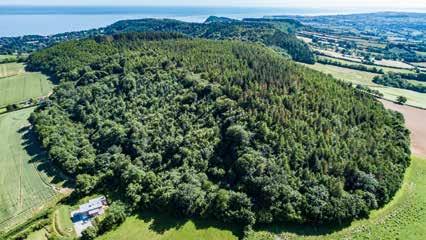
championing the rainforest and undertaking significant work in Stoneman, Project Manager with for Scotland’s Rainforest, said: rainforest holds an immense threatened wildlife, and it’s great finally starting to receive the deserves.
Forestry’s refreshed approach collaborative, landscape-scale, long community-centric rainforest is key to the future of this internationally important habitat, building of ASR’s partners and communities.”
Scotland’s rainforest zone stretches along the Atlantic coast of Argyll and the west Highlands, where the climate is wetter and milder. This oceanic climate creates perfect conditions for the rainforest’s rare ferns, bryophytes and lichens.
Forestry and Land Scotland manages a third of the 30,000 hectares of the rainforest zone and has exceeded its own targets for treating rhododendron and deer control. It has treated 930 hectares of rainforest rhododendron last year and managed a 13% increase in its deer culling in connection with rainforest restoration.


Sidmouth, Devon
Sidmouth: 1.3 miles, Exeter: 14 miles FOR SALE

Elisabeth Boivin, Managing Director of Tomorrow’s Forests, spoke to Eleanor O’Neill about receiving the Changing Attitudes Award at the Confor Dinner & Awards 2024.
How do you feel about winning the Changing Attitudes award?
We have focused heavily on extending our reach and defining our key messages over the last year so being recognised by the industry as having achieved this is a great honour. We prioritise communication across all functions of the business, and it is fantastic to be acknowledged as being instrumental in changing attitudes about forestry.
We strongly believe that the forestry sector can make a positive difference to climate change and biodiversity goals through sensitive design and management, and that effective communication is the best way of highlighting the amazing work done within the industry.
It was such an honour to receive this award, particularly as we are celebrating our tenth year as a business in 2024. Particular mention should go to our marketing team who have done a brilliant job this year of expanding our reach and creating some amazing content.
Has producing educational content about the industry taught you anything new?
Producing content can be very rewarding and one of the most interesting aspects is collating research on a topic and finding a way to convert that into an engaging story that will grab people’s attention.
Researching how timber production can contribute to climate goals was fascinating and such a positive message, particularly when considering how the use of timber in construction can store significant reserves of carbon indefinitely. One of our recent blog posts covered the timber shortage crisis and we learned a lot researching for that one, and our video on small scale
charcoal and biochar production was a great insight into sustainability in the sector.
There are so many fantastic stories within the forestry industry, we look forward to sharing more of them.
How would you like to see public perceptions of the industry evolve? There is a perception that producing timber is a very destructive process, and that commercial forestry always creates vast monoculture plantations with no value for wildlife. We would love to see these perceptions change to acknowledge that timber is a vital and renewable resource, and that forestry can play a vital role in meeting net-zero and nature restoration targets.
We were surprised to find how much non-native forestry plantations contribute to biodiversity and we ensure that we propagate this message whenever we can.
We would like the forestry sector to be seen as a partner in improving sustainability. The future has to focus more on the sustainable use of the resources that we have, and improving the understanding of the forestry sector is one of the key ways that we can do this.
What has been Tomorrow’s Forests’ biggest achievement so far?
Our biggest and most obvious achievement has undoubtedly been planting over 20 million trees across the UK, a figure that grows every year. We take pride in the fact that this represents a significant contribution to tree planting and nature restoration efforts.
It’s impressive given we started with a team of five friends in 2014. We now
employ over 60 planters working across the country and offer some of the best conditions available for our planters. We have now expanded our services to include fencing, maintenance, surveying, lake building, and habitat creation, and it is exciting to face the new challenges brought by legislation such as Biodiversity Net Gain.
The launch of our sister company Creating Tomorrow’s Forests in 2020 also represents a major achievement, as we are linking up private investment to active habitat restoration and reforestation, providing real world environmental gains for businesses and helping to monetise ecosystem services.
What do you hope to achieve next?
We have just taken on our first forester, and we are excited to expand our services further into planning and consultancy. Our aim is to provide clients with a holistic solution covering all aspects of the forest creation process, to ensure that we can offer a truly excellent quality of service.
We will also be looking to purchase more land and forests to expand our portfolio of natural assets and apply our habitat creation and management expertise to projects across the country. We have ambitious targets to create hundreds of hectares of new forest across the UK, making an even more valuable contribution to restoring nature and meeting climate targets.
We will also continue to communicate our work and broader forestry and nature related issues to as wide an audience as possible, increasing awareness and engaging people with the beautiful landscapes around them.
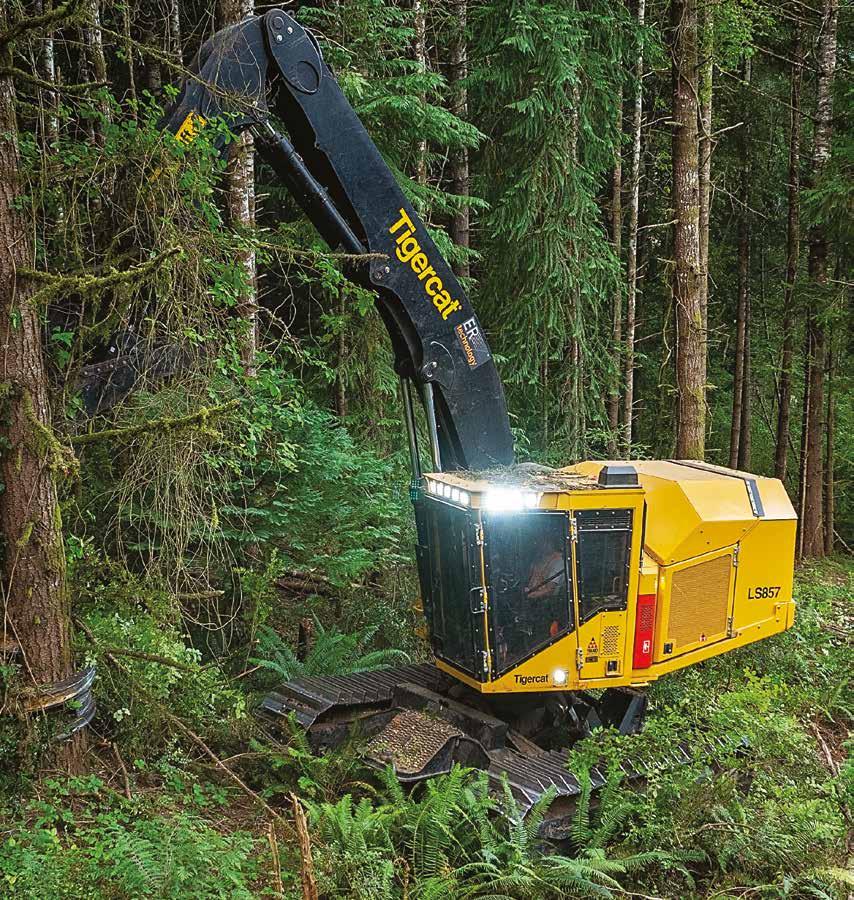







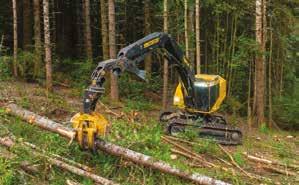








Following a Forestry Commission announcement, Confor National Manager for England John Bruce puts forward a reassuring perspective on the recent discovery of Ips typographus on Sitka spruce in England.

Wother Ips the trees
oodland managers, landowners and the forestry industry are encouraged to remain vigilant after the Forestry Commission (FC) announced a number of new Ips typographus findings in the South East of England in late July.
Also known as the eight-toothed spruce bark beetle, Ips typographus is a serious pest of spruce trees in Europe which was first identified in the UK in 2018. It prefers stressed or dying trees but under the right conditions it can attack healthy trees and has the potential to cause significant damage to Great Britain’s forestry and timber industries.
Following extensive surveillance, further outbreaks have now been found in the Demarcated Area in Kent and West Sussex, adding to the number of outbreak sites detected this year. FC continue to take swift and robust action including rapid eradication measures in response to the findings.
The finding of Ips typographus breeding galleries on a small number of cut and fallen Sitka spruce trees, located in close proximity to infested Norway spruce trees, on a site in West Sussex marks the first time the beetle has been discovered on this species domestically. There is no evidence of spread within the UK and the recent outbreaks are most likely due to natural dispersal of the pest from mainland Europe.
Confor National Manager for England John Bruce emphasised that this was an expected development. He said: “Like
Sitka spruce to the climate England likely to
“Although spruces susceptible and indeed infestations confirmation the UK forest the threat industry.
“Outbreaks managed and the outbreak blow over, the UK.”
FC Director Brown also measures are being taken, alongside wider surveillance to determine the scale of the outbreak, and identify further management steps required.”

The Forestry Commission is urging landowners to be vigilant and report any sightings of this beetle anywhere in Great Britain using the TreeAlert form in order to help reduce risk.
Defra Chief Plant Health Officer Professor Nicola Spence said: “We can confirm that new findings of Ips typographus in the South East of England have been reported by the Forestry Commission on a small number of cut and fallen Sitka spruce trees in West Sussex.
“All landowners and land managers should remain vigilant for Ips typographus as temperatures rise, continuing to check the health of spruce
Landowners and managers served with a Statutory Plant Health Notice due to an outbreak on their site may be eligible for grants to support felling and restocking activity through the Tree Health Pilot.
This announcement follows the introduction of new measures in June to protect against the impact of Ips typographus through the extension of the Demarcated Area. A Demarcated Area is in place in the South East of England and East Anglia to prevent potential spread of the pest, in line with the eradication action taken by FC to manage outbreaks.
Within the Demarcated Area, the felling and movement of all spruce material, including trees and wood with bark, isolated bark, and wood chip with bark, is prohibited unless authorised by FC.













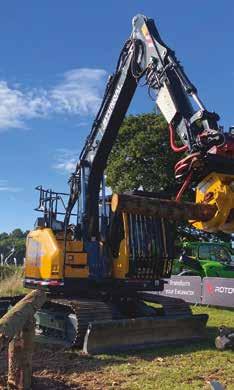

After a successful programme last year, Tilhill and Foresight Sustainable Forestry have teamed up again to further educate newcomers to the industry.
Tilhill Forestry and Foresight Sustainable Forestry Company (FSF) are proud to announce the continuation of the Foresight Sustainable Forestry Skills Training Programme in Wales, with the aim of better equipping contractors in the region.
First launched in 2022, the programme has seen continued success, with 70 candidates applying last year, and the majority of trainees completing the course, continuing into employment in the forestry industry.
This year, in partnership with Coleg Cambria Llysfasi, four training programme placements will be awarded across Wales. Successful applicants from communities local to FSF’s operations will receive fully funded training courses which will include forestry-related activities.
Three week-long training sessions will take place in Wales throughout August, September, October and November. The syllabus for the programme offers tractor driving, chainsaw skills, first aid training and much more, giving those who take part the foundation and key skills to build a career in the forestry industry.
Over the last 75 years, Tilhill Forestry has planted more than 1 billion trees and, as a private company, has the greatest number of professionally qualified forest managers in the UK, specialising in woodland creation and management and timber harvesting and buying.
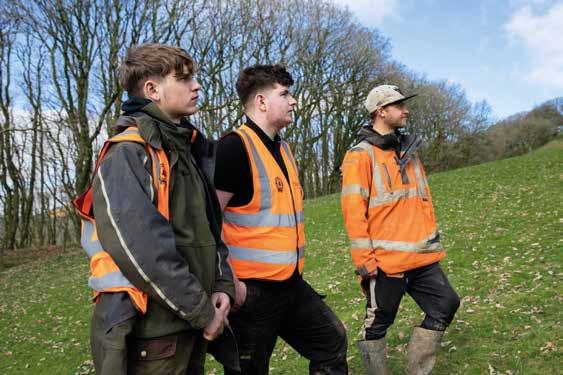
completion of the course, candidates will be given the opportunity to apply for any available Tilhill Forestry or wider BSW Group vacancies and work on FSF’s projects.
FSF invests in UK forestry and afforestation schemes with a key focus on increasing the UK’s sustainable timber supply. Its approach to sustainable forestry is closely aligned with five of the UN’s Sustainable Development Goals, including protecting the natural environment, enhancing biodiversity levels, making a positive contribution to carbon sequestration, and supporting rural communities.
of the UK’s fight against climate change and biodiversity loss. Placing local Welsh communities at the forefront of accessing the career opportunities offered by this thriving industry and enabling them to shape its evolution will support a just transition and more sustainable future for all.”
David Edwards, Forestry Director at Tilhill Forestry, commented: “We are delighted to be able to offer the opportunity for more trainees to gain valuable and practical forestry knowledge in Wales, as part of the fully funded Foresight Sustainable Forestry Skills Training Programme.
“No prior training or experience is required to apply for the programme. We are looking for candidates in Wales who are motivated to learn new skills.
“This opportunity is ideal for people working in agriculture or contractor-based roles, as well as those looking to begin a career in the forestry sector within the local community.”
Successful candidates will be assigned a Tilhill Forestry mentor to advise on the development of their forestry career. Upon
FSF’s forestry schemes in Wales are playing an important role in battling climate change whilst simultaneously mitigating biodiversity loss.
Richard Kelly, Co-Lead of Foresight Sustainable Forestry Company PLC, said: “FSF is on track to have planted its entire 5,379-hectare afforestation portfolio by spring 2025. To put this in context, once completed, this is equivalent to one-third of the total area the whole of the UK planted in the year to 31 March 2023.
“Given the scale of FSF’s ongoing woodland creation operation, it is vital we have the skilled workers needed to help shape the next decade of sustainable forestry. Rural communities must be empowered to participate in the UK’s burgeoning natural capital economy and we are delighted to see this essential skills programme running for the third consecutive year in Wales.
“Afforestation will form a key pillar
The Institute of Chartered Foresters (ICF) has launched an accredited e-learning programme to help tree professionals get to grips with the latest edition of the UK Forestry Standard (UKFS), which comes into effect in October.
This is the first time the UKFS has been made available via an e-learning platform, and the interactive programme has been accredited by Lantra for certification upon completion.
It has the backing of Forest Research, the Forestry Commission, Natural Resources Wales, Scottish Forestry, and the Department of Agriculture, Environment and Rural Affairs (DAERA). The programme breaks down the 5th
With a vast area of Scottish forests to manage and monitor, there is an urgent need to grow the next generation of skilled foresters. Whether they’re future machine operators, site supervisors, planners or woodland officers, they can all benefit from the Forestry Pre-apprenticeship for 16- to 21-year-olds.
This scheme gives young people a first step into the sector, under the supervision of real forestry businesses that host them on placement. One of several encouraging initiatives underway, this approach has been adapted from the successful Landbased Pre-apprenticeship. It is designed as a relatively easy first step for young people and an ideal format for the hosting business.
The first cohort of forestry preapprentices successfully completed the programme last year and the five trainees have gone on to secure jobs within the sector. Recently, eight new preapprentices started their training with an induction week at Scotland’s Rural College (SRUC) Barony campus in Dumfries.
edition of the UKFS into bite-size chunks of information using words, graphics, animation and video to enable forestry professionals to learn the key elements of the standard without having to read through the 128-page manual.
Platform users virtual forest classroom before e-learning modules critical aspects forestry and woodland management compliant the newest edition UKFS. From biodiversity climate change, to soil, users can element of the at their
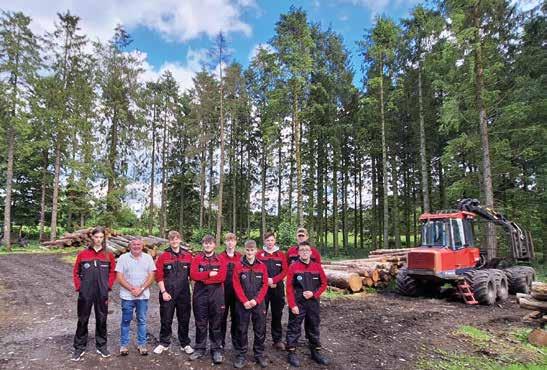
Five of the trainees still need mentor businesses to offer a six-month employment placement, particularly in Dumfries & Galloway, Argyll and Bute and the Scottish Borders.
Forestry management organisation RTS Forestry mentored a pre-apprentice in 2023 and shared their experience of the programme: “[Trainee] Ryan joined us via the Forestry pre-apprenticeship initiative in September 2023. He arrived ready to work thanks to the pre-start training that was provided.
“It’s encouraging to see individuals like Ryan who are eager to learn and contribute positively from the outset. Offering him a full-time position as a Trainee Forest Craftsperson demonstrates both his capabilities and the company’s commitment to nurturing talent within the forestry sector.”
Louise Simpson (pictured below), ICF Executive Director and UKFS e-learning project lead, said: “We’d like to see everyone working in professional forestry aspiring to the principles and best practice guidelines set out in the UKFS. We recognised that we needed to make which is why we’re launching an accredited platform to help bring the


we have created that’s new and our sector, fantastic graphics, elements and virtual
hope that everyone professional and woodland management will want to with the new UKFS edition via our e-learning programme to familiarise themselves with the changes and consider how implement them. all about working
Ringlink employs the pre-apprentice and manages all administration, arranging the initial training through SRUC, with funding administered by Skills Development Scotland.
The mentor business has a chance to interview the pre-apprentice to make sure that they are suitable, and they are responsible for trainee wages in accordance with the Scottish Agricultural Wages board minimum rates for the six-month placement.
The pre-apprentice gains a training package worth around £1,500 which is tailored to forestry. This includes the residential induction week, followed by bespoke short course training undertaken during the work placement.
For further information about mentoring a trainee, please contact Gail Robertson of Ringlink Scotland at gail@ ringlinkscotland.co.uk.
together to create the best possible environments for trees to flourish so that we can achieve our various aims against multiple objectives.”
The course has been built by specialist e-learning programme developer adaptiVLE, using the ICF’s new online education platform Silvestor (which was also developed by adaptiVLE). The script was produced by a technical authoring team, led by Chartered Forester Martin Glynn FICFor CEnv.
Funded by the Department for Environment, Food and Rural Affairs’ (Defra) Trees Call to Action Fund, the 5th edition of the UKFS provides the basis for forestry regulation and monitoring in England, Scotland, Wales, and Northern Ireland. It has been updated following devolution to reflect changes in legislation, new international agreements and advances in scientific understanding. By successfully completing the UKFS e-learning programme, foresters will be accredited and compliant, and able to demonstrate that their activities and proposals are legal, sustainable and follow the principles of best practice.

Richard Hunter, Confor Technical and Industry Support Manager, looks at the burden of responsibility created by certification schemes, and the importance of compliance.
This year has seen the industry beginning to adapt to UKFS 5, alongside still dealing with the annual round of internal and external UKWAS audits.
There are over 20 Forest Manager FSC/ PEFC certificates in the UK and all public forest estates are also certified, meaning that 44% of the UK’s managed woodlands are audited. The UK is seen as a low-risk country for risk of mixing products and has for several years a good record in terms of its certification.
However, reports from certification managers across the country show an increase in the pressures they face to comply.
At the beginning of the year, ILO self-assessments were the main topic, increasing the burden on the harvesting contractor base to evidence they do not, among other things, use slave or child labour. While slave labour has been addressed in the UK via the 2015 Modern Slavery Regulations, and we have very strong legislation in place (such as the Health and Safety at Work Act 1974, supported by robust industry guidance) that covers Provision and Use of Work Equipment Regulations and Personal Protective Regulations, sometimes it is the minor things that catch us out.
Take the life span of a piece of PPE or a first aid kit, for example. The manufacturer will state how long it can be used for in ideal conditions but when not used or stored correctly, that life span will quickly decrease. Of course, this then needs to
be recorded, creating a hefty paperwork burden. The real question here is: can every forest manager guarantee that every piece of PPE on their sites is fit for purpose?
In the UKFS 5 consultation there was a considerable emphasis on waste materials. While waste has been a feature of UKWAS for some time, there is growing pressure on the industry to deal with legacy waste. The problem of old tree tubes is an industry-wide issue, and the Forest Plastics Working Group have been fundamental in taking the industry in the right direction, such as in pushing for and setting up collection points for legacy tubes.
However, old tubes can be found in many woodland creation schemes from the last 20+ years and the effort to remove them is a massive undertaking. There is now a considerable shift towards biodegradable tubes, the use of deer fencing, or in some cases, over-planting and just accepting losses.
The considerable debate about what is a biodegradable tube and where it should or shouldn’t be used aside, the issue in UKWAS 5 is simple. In section 3.7.1(b) “the owner/manager prepares and implements a plan to manage and remove redundant materials”, and examples include tree shelters and fencing. Therefore, all certified sites need to be actively engaged in waste management.
Waste does not just include plastic tubes and planting bags; it includes any materials that have served their purpose and have not been removed. For example,
old fences that may have once formed the boundary of the woodland, but due to additional planting the fence is within the site and redundant. While wooden posts may rot, stock netting and barbed wire takes considerably longer to break down and over time is considered waste.
The cost of removing redundant materials is often high and can, when it does not impact tree growth, be difficult to explain to landowners. However, this is where the UK excels in terms of sustainability. We do care about the woodlands we manage and not just the financial bottom line.
A further obstacle is that the availability of contractors has reduced across the sector. Therefore, finding anyone able and willing to remove redundant materials is becoming harder and harder. One answer is bringing more young people into the sector by way of the England Level 3 Apprenticeship. This is the ideal place for someone to get their start and from day one they can be employed on this basic operation while gaining the confidence and trust to carry out more complex work.
Admittedly, this is not an awe-inspiring job, and employers should also be careful to balance the need to remove redundant materials with teaching and support.
When a woodland is certified, every part of it must satisfy UKWAS requirements. There are no optional sections. However, we as a sector have become very good at meeting the headline points... now we just need to tackle the rest.




Offering a comprehensive range of professional log & woodchip drying kilns for the timber industry. Along with kilns for sawn timber, pallets & fencing producers
KILN Services has been designing and manufacturing timber-drying kilns from its base in Essex for over 45 years. The company provides drying and heat-treatment kilns for all sectors of the industry, including softwood and hardwood sawmills, pallet manufacturing, fence-post producers, biomass fuel producers, modified timber and research facilities in universities and training colleges. In recent years, the market for kilns to dry biomass fuel has increased considerably. This has been driven by consumer awareness of product moisture and government initiatives to improve air quality, such as the Woodsure Ready to Burn accreditation scheme.
Please visit our website for more information www.kilnservices.co.uk t: 01621 785 935 e: kilnservices@btconnect.com Kiln Services Ltd, Essex, CMO 8TE









It’s time to consider your stock management ahead of EUDR, says Confor’s Richard Hunter. The new regulations come into effect from December with no sign of delay, despite industry efforts.
The European Union Regulations (EUDR) approaching, with and entry points across commodities derived from oil, rubber, soy, cattle, cocoa effective from 30 December
This leaves us looking than half the year to go. doesn’t start at the border forest.
Timber is required to so it can be traced back supply chain and prove from harmful deforestation. harvesters and processers looking at stock levels and when and where their products to be sold. All timber products for the EU should now the regulations and ready for traceability standards kicking in at the end of this year.

Timber felled now will need a Due Diligence Statement (DDS) number. Even if the first timber product (e.g. carcassing) is not going into the EU, the co-product (e.g sawdust) could be. Forest owners and managers need to be very aware of the supply chain to ensure that their timber is not being excluded from potential markets. Stock management from now on will be critical to ensure that UK products are not stopped at the EU border.
Packing materials such as paper, card and pallets used to transport material into the EU are exempt from the regulations. However, if the goods are themselves packing materials to be used in the EU, then they do fall under EUDR. For example, a pallet carrying beef products across borders will only hold the beef subject to EUDR. Similarly, a cardboard box
containing paper-based packing to be sold for future use will require the contents to compliant with EUDR, but the outer box itself is exempt despite the comparable materials.
Importing EUDR commodities from the EU should not present an issue unless you intend to resell back to EU countries. If importing trees stakes, for example, the seller will have a DDS number accompanying the stakes to get them past border checks. Once in the UK, the DDS number does not need to be passed onto clients unless the stakes are destined to go back into the EU market.
Currently there is no need for timber that is only going to be sold to UK endusers to have a DDS number. However, it will be very difficult to backtrack and gain a DDS number once the timber is in the supply chain, and it cannot be mixed with
EUDR compliant material.
The regulations include a requirement for each country to be assigned a risk value (high, standard or low). This was intended to have been competed prior to implementation but delays mean the process is only just starting. It is important for the UK to be scored as low so as to reduce many of the extra due diligence burdens.
Confor intends to be part of the process, supplying relevant information to make the case for a low-risk status.
As well as a significant increase in paperwork (digital or real paper) there will be other impacts of EUDR. It may very well change the face of global timber supply, with some counties unable or unwilling to comply. This means they will be looking for other markets to sell timber products and the UK will be high on the list given our current import rate.
In turn, this will pose problems for us in terms of greater competition and also ensuring that we keep our supply chains EUDR compliant to maintain trade with the EU.
Rumours of delayed implementation are at the moment just that: rumours. The signals coming from the EU are that they will implement the regulations on time, given the amount of money invested in the computer system and the other legislation relying on a successful launch.
While some countries, including Germany, have called for a delay, thus far they seem to have fallen on deaf ears. We must plan for the implementation deadline of 30 December 2024.
For further EUDR news and links to useful resources, please visit the Confor website (https://bit.ly/ConforEUDR).

FISA CEO Gillian Clark explains why mechanisation should be first choice when felling diseased Ash.
The felling of dead and dying Ash in effect makes an already hazardous operation much more dangerous; it is essential that every effort is made to fell these sites mechanically and to keep any chainsaw operations to a minimum.
Only the most competent and wellequipped operators should be working on sites where there is diseased Ash.
An increasing range of kit offering mechanical solutions are arriving on site, which is good to see. ‘FISA 608 Tree Shear and Grapple Saw safety guidance’, drafted by the FISA Plant & Equipment Working Group (drafting group chaired by Sean Reilly), provides the industry with vital safety information for operation.
The FISA Plant & Equipment Working Group is a collaborative effort including the support of HSE, Arb Association, contractors, suppliers and manufacturers. The Working Group will soon follow on with the release of new FISA 609 Tree DeLimber guidance, with thanks to the team at Jas P Wilson.
FISA continues to coax industry training groups to assist with provision of 608 training and we’re pleased to see this now becoming more widely available, following initial training provision and course scoping by MWMAC. The Forest Works Manager (FWM) shares, with his contractors, the responsibility to agree the selection of suitable work equipment. FWMs should also attend 608 training to help them safely assess, plan work to be undertaken, and check whether machines on site are fit for purpose and safely guarded.
FISA routinely receives 2-15 general enquiries a week, many including questions around the increasing use of mechanical attachments to base machines. Whilst good to see increasing use of mechanisation, there is a concern about the need for better understanding around the suitability of the base machine.
Is it fit for purpose, safely guarded, including ROPS & FOPS (Roll Over and Falling Object Protective Structures), and with a compatible head? The work needs

infrastructure-specific the guidance. (for operations, be found 608).
• Location of adjacent workers and banksmen, and members of the public.
• Machine access into and within the work area, to ensure optimum work position is achievable and that the ground is suitable to ensure machine stability.
• Be aware of all traffic on site.
• Consider road closures dependant on the risk zones required – make sure to include all vehicles needed in any area of road closure.
• Ground protection – damage, reinstatement requirements, egress and recovery options.
• Environmental impact – consider the impact the operations may have on the local environment.
• Underground and overground services –potential damage to underground services, need for additional protection, or contact with overhead power lines. Site-specific information such as service diagrams, schematics, plans and early contact with the service provider.
• Site obstructions/adjacent risks – make assessment of buildings, fences, highways, railways, infrastructure, power lines and telecommunications. Adhere to exclusion areas.
• Terrain – consideration of topography, ground movement, damage, disturbance and loss of traction.
• Environmental conditions – you must consider environmental conditions on the site on the day of work and how these can
provider/infrastructure owner/ operator/ managing agent. This may be Network Rail, the regional electrical network operator, or regional/national highways agent/authority, etc.
All related operating standards applicable to the infrastructure and machine must be understood and followed during all operations, unless additional safety controls have been agreed with the service provider/infrastructure owner/ operator/managing agent.
It is also important to remember that the responsibility for ensuring that the contractor has a ‘system’ in place for routinely checking machinery, lies with the FWM.
Part of the FWM’s role in managing the worksite is to select competent contractors and to monitor the health and safety standards. The FWM must ensure that the contractor has a system in place for carrying out checks and maintenance on their machinery. The contractor’s inspection and recording system must include arrangements for repairs to be undertaken when faults are noted.
FISA Plant & Equipment WG have produced ‘Technical Note 003 Inspection of Work Equipment & Machines’ to provide guidance on the required inspections as detailed in PUWER and LOLER. The Tech Note includes a sample machine daily and weekly inspection record which can be adapted to your own situation.



Felling, limbing, bucking and notching. A truly excellent pairing of reliable power and easy handling. With low weight and optimised balance, it is - just like you - made for movement.


APF Exhibition Secretary Ian Millward brings Confor Members up to date with the huge range of events and competitions taking place at this years show at Ragley Estate, Warwickshire on the 19-21 September.
The Demo Committee have been working very hard to make APF 2024 better than ever. There is always a danger that we rest on our laurels but as a Team we feel it is very important to keep moving forward and ensure the show appeals to all our visitors. Whether they come to buy new machinery, compete, watch the competitions, listen to the latest seminars, try their hand at a new skill, see and try the latest kit, or
meet old colleagues to network and catch up on news and gossip, there really is something for everyone at APF 2024.
Whatever your forestry and arboriculture interests, it promises to be a fantastic showcase for the industry. We hope you have a great time.
The UK Forwarder driving competition makes a welcome return to APF 2024, this time with Richard Court Forestry Engineering and Coombes Forestry Ltd picking up the
controls. Taking place in a much larger arena than previously, competitors will face a series of tasks and obstacles to test their crane and machine control against the clock.
The machines will be John Deere G series forwarders. Competitors may be able to enter on the day subject to availability. Competitors must hold the relevant Forest Machine Operator certification. There will be daily prizes for the fastest time less time penalties, and the UK trophy will




be presented for the best overall time over the three days.
The A.W. Jenkinson and Tilhill European Chainsaw carving championships return with 25 of Europe’s top carvers from as far afield as Lithuania, Romania and Poland. There is a stellar line up


with five previous winners and two of the top four from recent television competition Top Carve.
The carvers will be using large dimension Redwood from Longleat Estate to allow full rein of their creativity. There will be twice daily speed carving events as well as the main carve. All the carvings will be auctioned off on Saturday from 2pm so come along and treat yourself to a unique sculpture.
The Husqvarna World 25m pole climbing championships have a huge prize fund of over £10,000. Current World Champion Dan Wheelan will defend his crown against 50 top climbers and see if he can beat his record time of 8.84 seconds.
If you have never tried pole climbing before, come to the arena and try your hand. You might even win the best beginner’s prize.
APF 2024 will host not one, but two British fencing championships sponsored by McVeigh Parker. The arena has been increased this year to accommodate the demand for competition places. Competitors
• Arb Worker Zone
• Fencing Village
• Forest Worker Zone
• Woodland Crafts Area
Competitions
• A.W. Jenkinson & Tilhill
European Chainsaw Carving Championships
• British Tree Climbing Competition
• Husqvarna World 25m Pole
Climbing Championships
• UK Forwarder Driving Championships
• UK Lumberjack Competition
• UK Open Fencing Championship
come from all over the UK and Ireland and as far afield as Norway. Thursday 19 September will see the British speed fencing championships using the new metal Clipex fencing, and Friday 20 September will showcase
the traditional post and wire championships. The last day of the show will see demonstrations of fencing machinery in action in the arena.
The Teufelberger and Pfanner APF Team tree climbing challenge is another new event this year. The competition is designed to be fast and exciting to watch and will be a speed competition requiring climbers to ascend the tree, navigate through the canopy and ring a series of bells against the clock. Visitors can enter in advance or on the day, subject to availability.
The UK Lumberjack competition also returns to test the skill and strength of athletes using axes and crosscut saws across five testing disciplines, including the twoboard climb, underhand chop, and the ever popular and noisy ‘hot saws’. If after watching the axemen you fancy a go at axe throwing, then you will be able to try your hand at this for the first time since 2002.
Our traditional woodland crafts area continues to be a very big draw for visitors. We will have the largest variety of crafts on display anywhere in the UK. Clogs to coracles, charcoal to chairs, wheelwrights to basket makers, and rakes to rustic carpentry. If you want to know what a Sussex pimp is this will be the place to find out!
Many of the craftsmen and women will be happy to let you try your hand at a new skill. See every phase of charcoal burning from stacking the kiln to the finished product.


Horse logging is a valuable method of timber extraction on sensitive sites and the British Horse Loggers will be running demonstrations and giving advice on all matters horse logging. You will even have a chance to get behind the reins and try it for yourself.
“Whatever your forestry and arboriculture interests, it promises to be a fantastic showcase for the industry.”

The show is a meeting point for the whole industry and almost every industry association is represented.
• Arboricultural Association
• British Christmas Tree Growers
• Confor
• FCA
• FISA
• Focus on Forestry First
• Forestry Commission
• ICF
• Land Workers Alliance
• Lantra
• Royal Forestry Society
• Small Woods Association

your head for heights and see if a career in arboriculture is for you. No excuses for not trying as the minimum age is just six years old!
You can also gauge your skill with a chainsaw in complete safety using the Husqvarna chainsaw simulator and see how fast you can cut the branches off a tree.
Our Forest Worker Zone returns with excellent advice on careers in forestry and arboriculture and a whole host of other subjects such as worker health, training and grants.
Confor has organised a series of very topical seminars on a wide range of subjects from grants, pest and diseases and timber. The Confor AGM will take place on Thursday 19 September and the Confor team will be offering free tea and coffee to all visitors at their stand.
We are keen to get visitors involved and try their hand at a new skill. To this end the Great Big Tree Climbing company will be enabling you to try tree climbing using a rope and harness. Test >>
Education and careers are always at the front of our mind.












We are working with the Royal Forestry Society once again to organise ‘seed to sawmill’ guided tours for 800 local children to see what happens in a modern working woodland.
The APF Team has provided a £6,000 bursary to help schools with travel costs to get the youngsters to the show. Confor is also organising tours for students and graduates to show them the wide range of career opportunities in forestry and arboriculture.
All the above is in addition to the core element of the show: 300 exhibitors with £80 million worth of working equipment on display over a two-mile area. There is far too much to do in a day. Book into our onsite campsite or a local hotel and come for the full event.
I feel it would only be right to end this update with the sad news
All Confor Members are entitled to free entry to APF 2024 on presentation of a valid Membership Card. You should have been sent this already so please check your inbox.
Note that each card is valid for one attendee only and can be printed or displayed on your device. There will be no other way to confirm your membership status at the gates so be sure to double-check before you arrive at the show!
Any Member who fails to present their Card will be required to pay the full £25 entry fee. Confor will not be able to reimburse any Members charged at the gates due to a missing Card.
If you have not received your Membership Card, please contact members@confor.org.uk.



and personal memories of my old friend and colleague Roger Fitter MBE, who died last month aged 88. Roger was the very first APF Exhibition Director and it was his drive and enthusiasm that developed the first APF National Forestry Demonstration held at Longleat Estate in 1976 into what it is today.
Roger served as Exhibition Director from 1976 until he stepped down after APF 2002 at
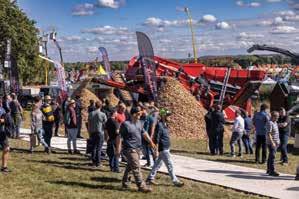
Lockerbie. Even then, he continued to help us every two years and took great pride in the accuracy of his marking out of our site and car parks. No fancy surveying kit or GPS for Roger. He preferred his trusty measuring wheel and a ball of baler twine!
It was Roger that appointed me as Exhibition Secretary back in 1994, so he has to take the blame for that! It was a privilege to work with Roger for so many years


We would like to offer a huge thank you to the sponsors of APF 2024:
• A.W. Jenkinson
• Euroforest
• Forestry Journal
• Husqvarna
• Tilhill
Without their support, so many events and competitions would not be possible.
and I was in awe of his energy and stamina. How he did it I don’t know. (Perhaps the gin and tonics helped!) They broke the mould after they made Roger - a real old school forester and gentleman. I will miss him.
Full details of the show, events, competitions, entry forms for the competitions, a timetable of events, maps and a list of exhibitors can be found on our website (www.apfexhibition.co.uk).
The Confor tent will be located at Stand 1710, near the APF HQ. Our team will be delighted to catch up with Members in person and hear all your views on the latest news.
Stuart Goodall, Confor Chief Executive, said: “Once again, the APF team have done a fantastic job in putting together the biggest and best forestry show in the UK. The exhibition keeps going from strength to strength.
“The APF occupies a special place in the forestry calendar, bringing together people from every corner of forestry, arboriculture,
wood products and biomass. It is a unique and valuable experience for anyone with even a passing interest in what our industry does.
“Along with the rest of the Confor team, I am looking forward to meeting with Members, exhibitors and newcomers to the industry. Please do drop by the Confor tent to say hello or join one of our events in the neighbouring seminar tent.”
We will also be ready to discuss the benefits of joining Confor with any prospective new members, so please do invite your colleagues and clients along.
The Seminar Tent is kindly sponsored for 2024 by Forestry Commission and Forest Research. All details are subject to change. Visit our website for the up-to-date programme.
THURSDAY 19 SEPTEMBER
Putting wood and timber back at the heart of forestry!
10-10.30am Mammal protection to grow timber - Forestry Commission
11-11.30am Growing quality timber products from an agroforestry systemForestry Commission
12-1.45pm Confor AGM and LunchSponsored by LOGR UK
2-2.30pm Implementing our National Wood Strategy - English Forest Industries Leadership Group
3-3.45pm Tree breeding to support future quality timber for UK Forests – Conifer Breeding Co-op and Future Trees Trust
4-4.30pm Hylobius Insecticide UpdateConfor
Forestry & Arboricultural Careers and Education at APF 2024
Getting young people interested and involved with managing, creating and looking after forests, woodland and trees is vital if we are to achieve the UK’s tree planting targets, reduce our reliance on imported timber, and maintain the health of our existing trees and woodlands.
To this end, APF 2024 has teamed up with the Royal Forestry Society (RFS) and Confor to show young people what happens in a modern working woodland; everything from seed to sawmill. We highlight the huge range of career opportunities on offer and that there is a lot more to it >>
FRIDAY 20 SEPTEMBER
Innovation and professionalism putting our future forests in safer hands!
9-10.30am FISA Working Groups Breakfast
10.45-11.45am Technology projects to support future forestry - Northwoods 12-12.30pm Ips typographus updateForestry Commission
12.45-1.45pm The Woodland Grow Solution: Living Soil (Lunch & Learn) –Sponsored by Woodland Grow & Green-tech Ltd
2-2.30pm UKFS 65% mandatory single species implementation - Forestry Commission
3-3.30pm Building Professionalism in Forestry - Institute of Chartered Foresters
SATURDAY
Working in our forest industrythe wood and the trees! 10am-12pm: Student tour - Confor

than wearing a checked shirt and carrying an axe!
APF 2024 is the UK’s largest forestry, woodland, arboriculture, fencing, trees and timber show. It is a showcase for every aspect of the industry. Working with the RFS, around 800 school children will attend the event and be given a guided tour of the show by the RFS Learning and Outreach team.
They will see the process of growing a tree from seed, how to plant it, look after it and the many ways that timber can be utilised from building, furniture, woodchips, firewood and charcoal. They will learn about the environmental benefits of tree planting and about careers as foresters, tree surgeons and engineers, with much of the modern equipment needing advanced computer and hydraulic engineering skills.
Traditional skills are not neglected, and the youngsters will be able to watch horse logging and woodland crafts in action. For those thinking about a career as a tree surgeon, they will be able to






“Traditional skills are not neglected, and the youngsters will be able to watch horse logging and woodland crafts in action.”
try their hand ascending into a tree using a rope and harness and test their head for heights.
APF 2024 recognises the importance of teaching children about woodlands but realises that school budgets are very tight so have offered a bursary to schools to cover travel costs.
Older students and graduates are not neglected with Confor conducting guided tours on the Saturday of the show. Many
colleges offering courses in forestry and arboriculture are attending and will be offering further advice on careers. Lantra, the industry training organisation will offer help with finding key skill courses.
If you would like to get involved in our schools and careers initiatives, please get in touch. This could be in the form of sponsorship of our Schools Tent, travel bursary, or something much simpler like donating marketing gifts like pens, keyrings, water bottles, baseball caps or sweets to make the visit even more memorable.
For more information on getting involved, contact info@apfexhibition.co.uk.















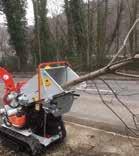
www.arbforest.co.uk

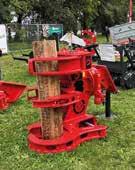

Established over 20 years ago, Surrey Forestry Ltd provide a full range of professional arboriculture, forestry and groundwork services for commercial and domestic clients.
• Biomass
• Forestry services
• Logs for sale
• Sawmilling
• Site clearance
• Tree surgery
• Vegetation clearance
Based in Surrey, we also cover Hampshire, Kent, Sussex and all locations in or around the M25.


• Woodland management

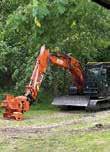

Alba Trees is the UK’s largest grown nursery, producing over 20m trees for planting each with around 50m trees currently growing on our nurseries in Scotland.
Alba has been trading since 1988 has been at the forefront of technical innovation – being the first large scale nursery to offer cell-grown trees into UK Forestry sector. Over the years have invested and expanded and now have 10 acres of internal growing space to germinate and establish our seedlings, plus a further 60 acres of external space to ensure all our trees are hardy and robust enough to thrive in challenging planting environments.

As we have scaled up our production, we have invested in new equipment to improve efficiency and increase capacity. We believe it’s critical that as the industry moves forward, reliance on migrant labour reduces and more elements of the sector can be mechanised. Our recently purchased transplanting machine will allow us to produce over 150k transplants every day and investments in state-of-theart seeding machines have allowed us to sow more seed, more accurately.
We have also invested in a Grading machine which allows us to turn orders around more quickly and gives us capacity to despatch 4m trees per month during the peak planting season.
Alba specialises in trees for native woodland production and offers multiple provenance options to fulfil most planting schemes. Tree seed is a scarce resource and Alba is active in sourcing and collecting seed as well as using key UK
seed suppliers. Cell grown production maximises the number of viable plants from each batch of seed collected.
Alba prioritises Biosecurity and believes all Nurseries have an obligation to protect and improve UK Forestry. Our Nursery is Plant Healthy certified and accredited under the UK Sourced & Grown scheme, with a core strategy of never importing trees. We have a sustainability objective designed to maximise production whilst minimising any harmful impact on our environment.
Alba Trees has been at the forefront of promoting biodiversity and supporting reforestation efforts across the UK and have been partners in some fantastic large scale woodland creation and reafforestation schemes.
We have exhibited at the APF for many years and believe the show is hugely important and influential for the forestry and arboriculture industries in the UK. It serves as a crucial gathering point
GRP cage option.
Making its exclusive UK debut, the New Spider 18.95 Hybrid is expected to impress with its latest design features. These features include a reduced overall weight, an increased cage capacity of 230kg, and full radio control operation. This makes it a highly anticipated addition to the range.
for industry professionals to exchange knowledge, explore new technologies, and discuss the future of forestry management and environmental conservation
As a key supplier to the UK forestry sector, Alba will be meeting with customers and engaging policymakers and other key stakeholders within the forestry sector.
Alba Trees is part of Confor’s Nursery Producers Group, and we aim to promote the use and benefits of UK grown stock at APF 2024. We are also keen to drive forward supply chain traceability, research and UK wide market development.
With the support of Confor, APF 2024 promises to be a landmark event that will drive progress and collaboration within the industry, ensuring a sustainable and prosperous future for UK Forestry.
We are very much looking forward to meeting new and existing customers at APF 2024! www.albatrees.co.uk
enhancing the versatility of these compact machines. With a user-friendly onboard diagnostic display now fitted as standard on every machine, downtime costs and delays can be quickly resolved. Additionally, this feature reduces time spent on general maintenance and inspection. www.promaxaccess.com
stablished 24 years ago, Promax Access will showcase several tracked ‘Spider’ access platforms from its unique 13-54m working height range. This includes the popular Arborists Spider 20.95 with a
Another UK debut product is the New Heron 10 tracked mast boom, which features automatic stabilisation, a 230kg cage capacity, radio control operation, and a 250kg winch option.
Hybrid technology is available throughout the entire Spider range,

The chase for the best saw chain comes down to grind technology. Other manufacturers attempt to replicate Oregon® chain, but our process is proven. As we continue to refine and improve, we continue to lead the way.
Saw chain quality checks







ForestAndArb is thrilled to announce that we will be exhibiting at the 2024 APF Show! Come and visit us at stands H1-H2 and I3 for an unmissable showcase of the latest and greatest in forestry and arboriculture equipment. We’re bringing together the industry’s top brands and introducing groundbreaking new products to revolutionise your work.
Get ready to be amazed by the power and versatility of Milwaukee’s Heavy Duty battery range. This year marks Milwaukee’s debut at APF, and we’re excited to offer you hands-on experience with their extensive line-up from top-handle chainsaws, hand hatchets, multi-tools, light towers, hedge trimmers, blowers, mowers and more.
Our expert team will be on hand to answer your questions and help you find the perfect tools for the job, with over 200 tools available in the M18 range. You will also walk away with a goodie bag for

every Milwaukee purchase at the APF, so be sure to take advantage!
We’re also delighted to be supported by Cutting Edge UK, offering a wide range of pruning saws, axes, hand tools, pole sets and more, all competitively priced so that you can get through your workdays with ease without breaking the bank. We’ll




have HAIX and Arbortec on-stand to too and discuss your PPE choices!
But that’s not all! We’ll also be showcasing the newest gear from brands Zamberlan, Montbell, Pfanner, Protos, ArbPro, and DMM. Alongside exciting additions, we’ll be bringing back favourite products from HAIX, STIHL, Husqvarna, Arbortec, Petzl, and Teufelberger. And don’t forget about our fantastic range from Echo Tools, who will be supported by us on their stand. little CS-2511TESC is always a bestseller in petrol top-handles, and for good reason, so we’d recommend coming to it!
As always, ForestAndArb is committed offering unbeatable prices. We promise our deals at the APF Show will be best you’ll find anywhere on the showground. If you can’t make it to the show this year, then fear-not, as Milwaukee will also be taking over our socials & websites with deals available for home delivery too, so be sure to follow us on the links below!
Mark your calendar for the APF Show and make sure to visit the ForestAndArb stand. We can’t wait to see you there! www.forestandarb.com

Come and see ForestAndArb at the APF 2024! Come and see ForestAndArb at the APF 2024! We’re on show stands H1-2, I3 with our largest We’re on show stands H1-2, I3 with our largest ever tent, full of amazing deals & offers. On-stand ever tent, full of amazing deals & offers. On-stand support from Milwaukee, HAIX, CeUK, Arbortec, support from Milwaukee, HAIX, CeUK, Arbortec, Montbell and more! Montbell and more!
Follow us on socials for more!
Follow us on socials for more! Facebook: ForestAndArb, Facebook: ForestAndArb, Instagram @ForestAndArbHQ, TikTok @WinchesterGM Instagram @ForestAndArbHQ, TikTok @WinchesterGM


















Plus over 100 more big brands! Plus over 100 more big brands!
For all things Forestry, Arboriculture, Lawn & Garden Care, robotics
For all things Forestry, Arboriculture, Lawn & Garden Care, robotics and more. and more.
Come and shop the best brands at the best prices in the UK from
Come and shop the best brands at the best prices in the UK from WGM LTD. WGM LTD.
Facebook: Winchester Garden Machinery, Facebook: Winchester Garden Machinery, Instagram @WinchestergmLTD, TikTok @WinchesterGM Instagram @WinchestergmLTD, TikTok @WinchesterGM
September 2023 saw the culmination of much planning and effort in the form of the brand new £4 million Komatsu Forest facility near Carlisle in Cumbria. The incredible new site has been designed and built with the future in mind, offering much more space than the former base and will greatly improve the way Komatsu does business in the country, particularly for the customer.
Situated in beautiful surroundings, the new two-storey, timber-clad office provides the current team a unique setting to work in, with room to grow in the years to come.
In conjunction with Carlisle United Community Sports Trust, 2023 saw the inception of the Climate Heroes program with the aim of supplying schools with climate change and sustainability-focused lessons. Designed to fit in with year 5 and

year 6 curriculum, the program would be an invaluable tool for schools, whilst providing myth-busting knowledge of the industry to the students and teachers alike.
The six-week lesson plan includes the topic of climate change, what it is and why it happens and how it affects us, with interactive games and suggestions for “what can I do at home” to help. For the final lesson, pupils spend the day at Komatsu finding out what it’s like to be in the forestry industry. The program has been a fantastic success, and plans are already in place for its continuation next academic year.
The much-awaited arrival of the first Komatsu 951XC Harvester machines in the UK has been a big highlight of the year. Their largest eight-wheeled harvester is a
stable and powerful machine, developed especially for harvesting in steep and challenging terrain. Hub reductions, the compact design and a large work area are just a few of the advantages.
Komatsu Forest are also now the UK dealers for Bracke Forest products, bringing their leading regeneration products to the UK market. After being acquired by Komatsu in 2019, the first TimberPro machine has also proudly been recently supplied to the UK market.
Their Partnership Rewards Program has proved to be a big hit with Komatsu Forest customers. By offering cashback rewards, extensive discounts, prizes and more, Komatsu Forest has proudly continued “Creating value together” with their valued customers.
www.komatsuforest.com

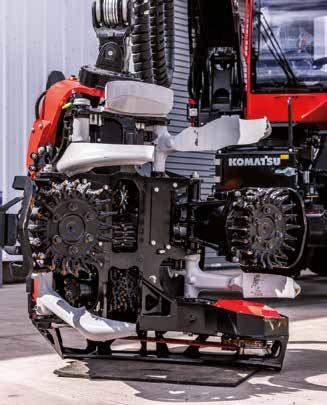













We’re thrilled to invite you to the APF Event 2024, the top trade show for the forestry and arboriculture industry. Join us at Sorbus stands F2-F4 for an unforgettable experience.
Check out the latest in climbing and rigging equipment, top PPE brands, and cutting-edge survey technology. Watch live demos of innovative climbing techniques and tools, and learn how they can boost your efficiency and safety. Don’t miss our biggest and best showcase yet!
Enjoy fun games and activities at our stands. Test your skills in competitions and win fantastic prizes. Whether you’re a seasoned pro or new to the field, you’ll have a great time getting involved.
Great Deals and Discounts
Take advantage of exclusive discounts on a wide range of products, never to be

this cheap again. Participate in our games and raffles for a chance to win top-of-theline equipment and valuable vouchers. Don’t miss these special offers!
Mark your calendars for APF 2024 and visit Sorbus International Ltd. Enjoy a mix of learning, fun, and unbeatable deals. We can’t wait to see you there!
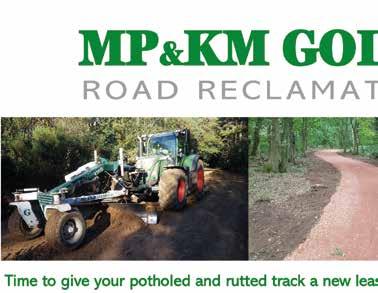
For more information, visit our website or follow us on social media.
www.sorbus-intl.co.uk































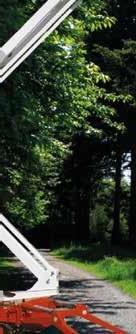






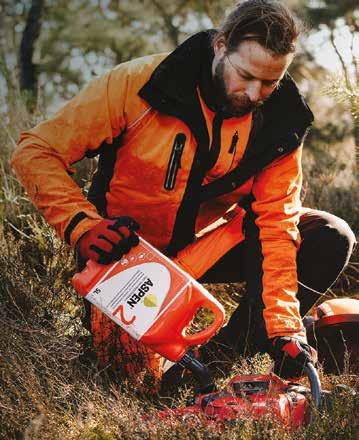






























Lauren Barker, Technical Account Manager at the UK’s largest supplier of weedkillers, fertilisers, grass seed and equipment, filled Confor in on what Agrigem can offer forestry professionals.
Agrigem is a provider of specialist world-class ground and plant care products to the forestry, horticulture, sports, amenity, equestrian, commercial, and retail sectors. Established in 2013, the team of BASIS, FACTS, NPTC and BETA qualified technical experts work with businesses across the UK.
Supporting forestry professionals with targeted, responsible, and effective remediation products as part of strategic forest management, Agrigem offers tailored solutions following a professional needs assessment. This means they are able to recommend products based on their efficacy for a specific purpose, at a specific time, in a specific place.
Lauren Barker, Technical Account Manager at Agrigem, said: “I very much enjoy spending as much time as possible with my customers in the location where our products and systems are being deployed.
“This gives me the opportunity to take feedback firsthand – feeding into the advice and guidance I can provide to others. It allows me to witness product efficacy, work with suppliers and manufacturers to share knowledge and best practice, and it contributes to professional and commercial development.
“But above all that, I’m happiest surrounded by trees and having the opportunity to see what excellence looks like in forestry settings!”
From a purpose built, Environment Agency-approved chemical store in Lincoln, Agrigem bring a range of specialist products of particular benefit to forestry businesses to the market, including zero-harm pest control products, targeted insect control products that protect the health of affected trees, tailored fertilisers to promote soil vitality and vigorous tree growth, and effective invasive plant, weed and disease control products that preserve ecological balance and forestry health.
Among these offerings are alternatives to the now unusable Asulox for bracken control. A 2023 EU regulatory ruling withdrew approval for the product’s active ingredient (Asulam), much to the

dismay of foresters as it allowed for highly effective control without damage to surrounding grass.
Agrigem is one of the suppliers recommending Roundup for management strategies going forward to stop bracken from dominating heather moor, wooded areas, grass heath and other areas at risk from its light-sapping characteristics.
A solutions-orientated approach is important at Agrigem, according to Lauren: “As a large stockist, we are wellplaced with our developers and suppliers to ensure products are always fit for purpose and any new product R&D is performed with the forestry sector’s needs in mind.”
Another example of this mentality is Agrigem’s soil and leaf tissue analysis service. DIY kits allow customers to find out what nutrients are present in their soil or deficiencies are causing problems
Stand C10b (Static Circuit)
in plants, enabling tailored ongoing care. Agrigem also supplies soil tests for toxic metals.
“We are committed to new product development and are currently working on offerings that deploy the latest AI, hardware, and minimal intervention technologies and innovations,” explained Lauren. “Opportunities exist to work closer with the forestry sector to better understand their needs and challenges, and ensure we remain able to support them with responsible product solutions.
“We are continuing to share our responsible, targeted approach to the sector with as wide an audience as possible. We will maintain a presence at sector forums like APF, hold discussions with forestry professionals and ensure we listen carefully and respond accordingly and appropriately.”
www.agrigem.co.uk























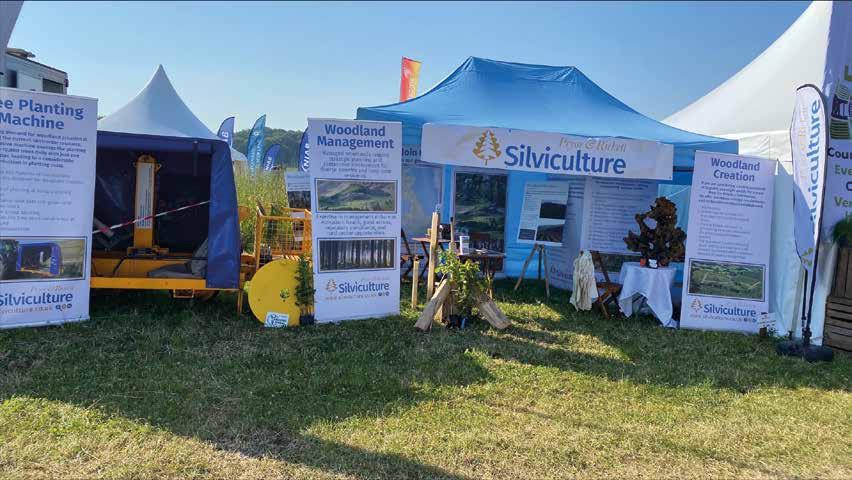
Anthony Geddes, Pryor & Rickett Silviculture, looks ahead to the APF against the backdrop of recent experience promoting forestry at and agriculture festival.
By the time of publication, we will be halfway between Groundswell and the APF. Other than this small diary observation, there are some actual similarities between these two events. The former is probably the most significant event in the regenerative farming calendar, while the APF definitely holds the title of the UK’s largest forestry, woodland and arboriculture event.
There are some perhaps more surprising similarities too; both display an unexpectedly large number of biomass wood chippers for instance! For me though, they both mark an important opportunity to meet new and existing clients, refine our service offerings, and obtain an all-important ‘temperature check’ on both the farming and forestry sectors.
The reason for reflection on these two events is not for the array of multicoloured chippers, moreover that they mark the convergence of two industries both focussed on landscape change.
As a firm, Pryor & Rickett Silviculture (PRS) took the decision to attend Groundswell this year. From my own experience of attending shows, it was an absolute success, creating many new leads with both private individuals and business to business opportunities in the conversational mix. What struck us within the PRS team was just how many farmers and estate managers wanted to meet us to talk about trees, and how their businesses could benefit from them.
Stepping out of the comfort of the forestry arena into the farming landscape is necessary if we, as a forestry sector, are to meet the emergent and fast-developing needs of farmers, and there are definite strong indicators that this will be growth opportunities over the coming decade.
The question then arises as to how the
supply chain can be flexed to support this emerging growth area. Simply put, what are the touch points between farming and forestry where the supply chain needs development?
The obvious areas are in:
1. Management support for woodland creation.
This is an obvious opportunity especially with the standpoint in the Environmental Land Management Scheme (ELMS), the Sustainable Farming Scheme (SFS) and Sustainable Farming (SF) in England, Wales and Scotland respectively. This requires investment in bringing forward new foresters, be that through university courses or apprenticeships, and on-the-job training for new sector entrants.
The interesting challenge is in how this training can support foresters to understand agronomy and farm economics. There is a wealth of agronomists looking for forestry support for clients but the development of these skills in-house is a definite investment area.
2. Tree supply and establishment skills. In my experience, this is perhaps the most complex element. For years, the Nursery Producers Group has sought to grow to meet demand whilst being haunted by the prospect of seeing thousands of trees go to waste. The lead-in time for growing trees is significant and the growth of tree demand has been far from linear. Better data sharing by the regulator and woodland planner is essential. There may also be opportunities through the use of innovative growing mediums, seed coatings and mechanisation of propagation. Pryor & Rickett has been running trials with Woodland Grow and the Living Soils Project to understand if quality saplings can be grown and planted within a 12-month window. Watch this space for the trial results!
3. Management of existing woodlands and availability of harvesting equipment suited to farm woodlands.
Perhaps the biggest surprise to my colleagues and I, from our brief immersion in the farming sector, was not the number of farmers seeking advice on new planting, but the scale of their existing unmanaged assets.
It is evident that the value of woodland creation grants is an attractive driver to new planting. Added to this, the rhetoric around carbon and biodiversity credits being seen as a necessity in order to continue operating in the supermarket supply chain makes them essential. Surprisingly though, with the small roundwood and firewood sectors remaining healthy, this potential income stream is being ignored.
This is not an exhaustive list but one that I feel highlights the opportunity and development areas available to us as a forestry sector. With foresters starting to think about farming and farmers contemplating the role trees, there is perhaps a more poignant question to be asked. How many farmers will we meet and welcome to the APF?
I’ll be writing to those we met at Groundswell to encourage them to engage in the forthcoming APF 2024 and ensuring we support our network with the NFU and CLA to publicise it on social media. In a push to develop the links Pryor & Rickett enjoy between Euroforest and A.W. Jenkinson, we’ll be appearing as a comprehensive supply chain service on stand K1 opposite the Husqvarna Arena at the APF.
The question remains however: How, as a sector, do we make the APF, our biggest event, the platform for more farmers to step outside their comfort zone and into the world of forestry, as we stepped into the world of farming at Groundswell? www.silviculture.co.uk





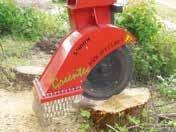
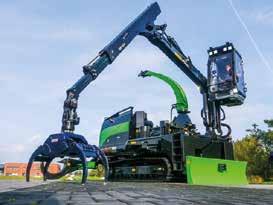


Founded in 1982, Wood-Mizer, headquartered in Indianapolis, USA with its European branch in Koło, Poland, leads the global market as a wood processing machinery and equipment manufacturer. With a worldwide distribution network and over 40 years of industry experience, the company provides cutting-edge products and innovative technology to small and medium-sized sawmills and large wood processing plants.

Their flagship product, band sawmills for converting logs into lumber, is globally renowned for its versatility, durability, precision cutting, and competitive pricing. Wood-Mizer offers a wide range of machines, from compact sawmills for hobbyists (LX series) and versatile mobile sawmills (LT series), to industrial machines and automated production lines (Wood-Mizer Systems).
Saw blades and maintenance equipment complement the product range, including resaws, multi-blade saws, Woodworking series planers and moulders, accessories, and spare parts. Wood-Mizer is synonymous with highquality products, professional advice, and customer technical support.
Discover the LT20START Sawmill
The Wood-Mizer LT20START combines advanced technology and practical solutions, delivering exceptional wood milling quality without significant investment. The LT20START can handle logs up to 80 cm in diameter and 6.1 meters in length. Its comprehensive
hydraulic package ensures easy and quick log maneuvering.
The LT20START hydraulic package includes three side supports, a central clamp, a log turner, two leveling supports, and loading arms. Additionally, the sawmill features an automatic cutting height adjustment device to streamline the operator’s work as much as possible.
Automating the production process
Wood-Mizer’s product range and technological solutions for the wood industry include industrial sawmill lines that enable production automation and enhance company efficiency. Wood-Mizer Systems’ industrial lines are customized to meet individual client needs, with professional service and technical support ensuring smooth machine operation for many years.
Wood-Mizer’s stands at trade shows and presentations featuring the latest industrial solutions consistently attract high visitor turnout, reflecting the

growing interest in Wood-Mizer Systems’ sawmill lines.
Produce your own wood products
The versatile Woodworking series combines planing, milling, and profiling operations, allowing users to create their own wood products easily and affordably. Woodworking planers and moulders are an excellent choice for any project and workshop.
All tools in this series share similar characteristics—they use multiple cutting heads to process materials, each driven by separate electric motors. They feature easily replaceable profile knives, cast iron worktables, convenient operator panels, and sturdy, durable housings.
Woodworking machines allow you to create a variety of products, including milled boards, floor panels, window frames, stairs, railings, baseboards, picture frames, and other finishing elements.
www.woodmizer.co.uk





Ian Millward remembers Roger Fitter MBE, a dedicated forester and founding member of the APF team, who sadly passed away in late June.
Roger was passionate about forestry for his entire career and his infectious enthusiasm for woodlands and trees inspired many a young forester. He never stopped championing forestry to all who would listen. He had a great sense of humour and a boundless supply of energy. Retirement was not a word that ever passed his lips.
Roger had been involved in woodland management in the southeast for eight decades and continued to work as a forestry consultant right up to the end. He was even awarded the MBE for services to forestry in 1992.
Born in Sutton, Surrey on 9 July 1935, Roger’s interest in forestry was evident from an early age. At 17, he left school and worked in forestry for a year before National Service called and he spent two years working as an electrician with the RAF. On completion of his National Service, he was once again drawn back to forestry and attended the Forestry Commission’s Forest of Dean


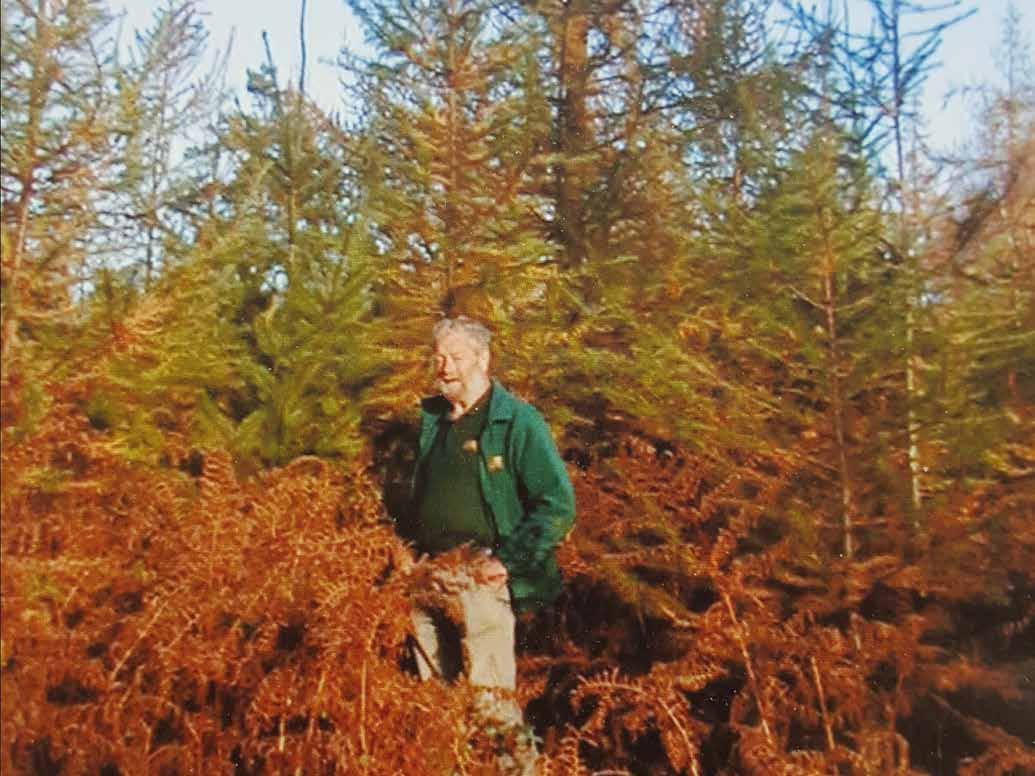
Training School between 1956-58. Roger continued to attend their annual reunions until 2023.
On graduation, Roger joined Wealden Woodlands which in the late 1960s merged with Oakover to form English Woodlands, where Roger went on to become a director. English Woodlands were bought by Tilhill in 2002.
Roger remained as a consultant with Tilhill for some time, but as an old school forester through and through, he never was a great one for formal systems and procedures. He liked to do things his way! He soon set up as a self-employed forestry consultant.
It is a measure of the respect and trust that Roger’s clients had in him that most of his estates followed him when he set up on his own. Roger took great pride in showing people around his long-managed estates, pointing out areas being harvested that he had planted 40 years previously. In 2016, Roger was awarded the Long Service Award with Bronze medal by the Royal
Forestry Society for 44 years’ service at Hascombe Estate in Surrey.
Roger was a key figure in the early years of the Association of Professional Foresters, serving on its council for over 30 years until it merged with the Timber Growers Association to form Confor on 1 January 2002. It was during his time with the APF that Roger first had the idea of a national forestry show to act as a showcase for trade members. The first National Forestry Demonstration took place in 1976 at Longleat with, naturally, Roger as its first Exhibition Director.
The show soon became a major feature in the forestry calendar and became simply known as the APF Demo. Roger remained as Exhibition Director for 26 years, leading it from its very simple beginnings to the huge event it is today. At his final show in charge, Roger welcomed the Princess Royal to open APF 2002 at Lockerbie.
Even post-retirement Roger wanted to remain part of the APF Team and would turn up every couple of years to
sailing up the Amazon and visiting Antarctica.
Following the Chernobyl disaster in 1986, Roger became involved in the Haslemere link of the charity Chernobyl Children Lifeline. This charity helped children from Belarus who had developed cancer following the fallout from Chernobyl. The charity would host children for a month-long visit to build up their health and strength and take them on various activities. On one occasion Roger drove a Post Office van full of aid from the UK to Belarus.
Roger never had any intention of fully retiring, continuing to work as a forestry consultant until he died aged 88 after a short illness. With his big bushy beard, Roger was a great, larger than life, old school forester. A real gentleman, the likes of which the forestry world will probably never see again.
Roger is survived by his wife Pauline, sons Mark, David and Richard, his daughter Joanne, adopted daughter Marla, 13 grandchildren, and his great grandchild.



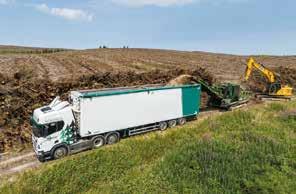





Clare Bone, partner and legal expert in health and safety at Brodies LLP, covers what you need to know about new wildlife crime legislation in Scotland.
The Wildlife Management and Muirburn (Scotland) Act 2024 became an Act of the Scottish Parliament on 30 April 2024, with the intention of improving animal welfare and taking a more robust approach to wildlife crime. For organisations operating in the rural sector, the new legislation gives rise to some significant changes in terms of the introduction of new licensing schemes.
WHAT ARE THE MAIN CHANGES THAT THE NEW ACT BRINGS IN?
There are five key changes:
1. Introducing a licensing scheme for the killing or taking of red grouse.
2. Introducing a licensing scheme for muirburn.
3. Introducing a licensing scheme for the use of certain traps.
4. Prohibiting the use of snares.
5. Expanding the investigation powers of Scottish SPCA inspectors.
WHEN DO THE NEW LICENSING PROVISIONS COME INTO FORCE?
Red first the on is 15 licensing 2025.
WHAT NEEDS TO BE LICENSED NOW AND WHO OVERSEES THOSE LICENCES?
The be NatureScot, 16AA licenses it appropriate within compliance Moorland available consulted process. years.
a 2024
CAN MY LICENCE BE REFUSED?
Yes, NatureScot can refuse to grant a licence. They can also impose and modify licence conditions.
NatureScot can also suspend or revoke licences in certain circumstances, for instance where they are satisfied, on the balance of probabilities, that: • A “relevant offence” has been committed – which includes, but is not limited to, breaches of Part 1 of the Wildlife and Countryside Act 1981, the Protection of Badgers Act 1992, the Hunting with Dogs (Scotland) Act 2023 and section 19 of Animal Health and Welfare (Scotland) Act 2006.
• The “relevant offence” was committed on the land to which the licence relates.
• The “relevant offence” was committed by the licence holder or “a person involved in managing the land”. That individual may include a keeper or contractor.
WHAT DO I DO IF THAT HAPPENS?
There is a right to appeal, by way of summary application, to a sheriff court if
obligations under this regime, seek legal advice urgently, to ensure compliance and avoid prosecution.
Confor Members have access to a free legal helpline, administered by Brodies LLP. Get in touch for guidance on key issues that impact forest owners and the forestry sector.
Whether your query is employment law, health & safety, planning, tax or propertyrelated, one of our experts will be happy to give you a free initial consultation. More info: https://bit.ly/3yPGRI1
For members based anywhere in the UK Brodies LLP 0131 228 3777 www.brodies.com confor@brodies.com
For members based in England/Wales Please contact the National Manager for more information

Red grouse shooting licences are the first to be introduced.


Goldcrest Land & Forestry Group evaluates the state of the market and notes the potential ripple effects of new government priorities.
The first half of 2024 has seen a noticeable uptick in market activity compared to the previous year. Lower inflation rates and the stabilisation of the Bank of England’s base rate have instilled a sense of cautious optimism among sellers and buyers. The extended period of economic slowdown that characterised much of 2023, pushing the UK towards a recession, led to hesitation among potential sellers and a significant reduction in incoming investment.
However, the recent Labour landslide victory in Westminster brings a fresh wave of expectations. Anticipations are high for new initiatives in house building and other economic stimuli essential for
fostering a robust recovery. The rapid and significant changes to renewable planning laws in England showcase how swift and impactful legislative actions can be when driven by a clear vision.
The start of 2024 has also brought a modest rebound in timber prices. During the winter months, many UK sawmills had minimal to no intake of green logs. This scarcity has contributed to the recovery in timber prices, though some industry players potentially risk flooding the market to boost their dwindling cash reserves. Despite this, timber demand has seen a resurgence, maintaining reasonable quota to prevent excessive roadside stockpiling.
Market timing often leads to short-term investment decisions and a move toward speculation, diverging from disciplined investment strategies. UK real assets, with their relative illiquidity compared to other investment classes, are somewhat shielded from these speculative dangers.
Clear opportunities in the market are rare outside of macroeconomic trends, making it risky to attempt to pinpoint market lows. However, investors with long-term strategies who thrived during periods of low base rates and steady timber price inflation may find today’s fundamentals even more compelling.
The current lack of buoyancy in the forestry freehold market, driven by


In recent months, Goldcrest has successfully facilitated the sale of several high-quality commercial plantations.
Killail Forest, which spans 316 hectares and is predominantly comprised of Sitka spruce, sold for a price significantly above the asking. Additionally, Lendrick and Fossoway also achieved a sale exceeding the asking price, attracting multiple competitive bidders. An offmarket sale of a recently planted forest in the Borders was also negotiated, achieving a sale price reflective of the excellent productive capacity of the site. These transactions demonstrate that well-positioned properties, when
marketed at appropriate price points, garner strong interest in the market.
With a renewed focus on market fundamentals, several appealing opportunities are currently available. Gleann Mor (234ha), featuring circa 100 hectares of mature spruce ready for harvest, has recently come to the market. Additionally, an off-market property totalling 250 hectares and offering 170 hectares of young to mid-rotation commercial spruce presents a secure long-term investment.
For buyers seeking scale and natural capital opportunities, the Cashel Estate
Loch Lomond, 2024, is Toward Woodland, productive Argyll at out as a opportunity for those capitalise on lower Landfor have the Wood; a well-established high spruce. Also the 228ha presents itself purchase within easy recently put two young, second rotation properties under offer. This suggests the market is beginning to move into a more buoyant phase.
While the saying “time in the market beats timing the market” holds true, the current market lull presents a unique chance to purchase properties at discounts to 2022 prices. With demand already on the rise, this window of opportunity may close swiftly. Investors who act now stand to gain significantly as the market continues its upward trajectory.

Anthony Elletson, Director of Border Woodlands Ltd in Wales, shares the journey his business has been on and how inspiration for a mechanical planting system has shaped its future prospects.
Border Woodlands Ltd have been Confor members for over a decade and in that time the scope of their work has completely transformed. Based in the midst of the Brecon Beacons in Powys, the origins of the business started much further afield than you might think.
“I started off as a solicitor and, as a result of work we were doing, visited Russia in the early 1990s to evaluate a housing finance programme. We advised use of forest resources would be better than the use of concrete; better insulation and greater workability in winter,” explained Anthony Elletson, Border Woodlands Director. “I had always had
an interest in wood and forestry and, together with the late Robin Marshall, we ended up with a harvesting concession in northwest Russia.
“I have been involved with the sector pretty much ever since, with work in Poland, Romania, Ukraine and the UK. We have managed woodland in Herefordshire, undertaken forestry related contracting, and worked with landowners on land-use strategies.
“My involvement with the Strath Carnaig planting scheme proved instrumental in giving rise to what we are presently doing. I was responsible for securing the EIA consent which resulted in approval for 1,200ha of new planting in Sutherland. The project had considerable
challenges, ranging from nesting hen harriers to deep peat and a wide range of topography and soil conditions.
“This was not only a huge scheme at the time (2020) but also an innovative forestry and habitat restoration scheme; very different from some of the sterile rewilding projects.”
Such a wide range of experience has served Anthony well and keeping Border Woodlands within the family has also helped shape the modern priorities of the company.
“With only a small team I have to turn my hand to most aspects of the business. Fortunately, my wife looks after the books and I worked for a number of years alongside one of our sons, who now works as an engineer for one of the large forest machinery suppliers.
“Since he moved on from the business, I have scaled back what we do to primarily concentrate on our planter project.”
The planter in question is an innovative, single pass low ground pressure (LGP) planting system that Anthony has now been developing for a number of years.
“I had been interested in the concept of mechanical planting systems for some time and was aware a number existed. However, my initial research indicated that there were significant drawbacks. During 2018, for example, I went to look at a concept machine in Canada which was taking a very different approach but also




came with its own set of issues.
“As I talked to people in the industry, it became clear that we would be in a position to address a number of issues which were bubbling to the surface: soil compaction, minimising run off, mycorrhiza/fertiliser application, and minimising CO2 emissions from both multiple machine passes and soil disturbance.”
Against the backdrop of seeing the large-scale planting at Strath Carnaig firsthand, and an impending Brexit that all but promised labour shortages in the sector, Anthony took the plunge and moved forward with a new machine concept.
“In the early stages, the biggest challenge I faced was in securing any acceptance to the concept of a single pass LGP planting system. I was hugely encouraged by the early support I received from one of the largest nurseries.
“I often find myself undertaking research into obscure topics impacting
on the planter, keeping abreast of industry developments, securing funding, protecting the IP we are developing, and refining the concept through to building a concept model.
“The validation of the planter mechanism design was secured thanks to an InnovateUK grant, awarded through the University of Sheffield Advanced Manufacturing Research Centre (AMRC), and has proved pivotal in giving us encouragement to push on and seek further grant funding to build and test a prototype unit.”
As with many new industry innovations, sustaining appropriate funding is a constant challenge and one that has seen the allocation of many of Border Woodlands’ own resources directed into the project.
“The forestry sector is limited in size, particularly in the UK, and whilst funders express some interest we are having to compete with hi-tech and consumerfacing, mass market proposals,” Anthony said. “Some options, like crowdfunding, are just not realistic but we seem to be making progress.
“In recent months, I have noticed a very different attitude from a number of the larger forestry management and investment companies. There is a growing acceptance that the industry is going to face considerable problems in meeting planting targets and that there is scope for mechanical planting
“It’s important to bear in mind, though, that there will always be a need for manual planters. There are many schemes too small to justify mechanical systems and there will be sites where a machine is simply not practical.”
Anthony sees this project as an important potential milestone for the forestry industry at large.
“I think that what we are doing is going to help the sector in moving towards meeting the ambitious tree planting targets set as part of Net Zero obligations. Much of what we are doing is designed to ensure minimal site disturbance, whilst maximising tree survivability and thus potentially reducing beat up costs.
“A large proportion of the restock planting and land for new, large scale, planting schemes is situated in upland areas and the winter planting season does not offer ideal working conditions. Being machine based, I believe that we will be able offer a better solution that will ultimately help to retain and increase the workforce, whilst offering opportunities for upskilling.
“I am hoping that we can stimulate the development of forestry engineering. The UK is a long way behind other countries, and we have a huge innovative engineering resource on which we can draw. This can have a beneficial impact not only on the wider UK economy but also more locally in areas where housing and employment are major concerns; typically, those relatively disadvantaged areas are where the forest resource is concentrated.”
Now that his work on the planting system is starting to come to fruition, Anthony is looking to future plans with no illusions as to the winds of change.
“Assuming the prototype works, and the field trials come somewhere near our expectations, I would look to incorporate the lessons learnt and industry feedback into a production model to be marketed within a year to 18 months.
“I would look to overseas markets at an early stage to provide the necessary revenues to continue work on advancements such as an excavatorbased system and the application of stakes and guards. I see the future as being one of continuous development and refinement based on customer needs and the provision of very high level of service.
“What happens in the longer term rather depends on how well the next stages go. For now, I am happy and looking forward to continuing for the foreseeable future. In the longer term we will have to see how the technology and market evolve, but we are ready to be a part of those discussions at any time.”
To find out more about Border Woodlands Ltd and follow the planter’s progress, visit www.borderwoodlands. com.

The need to effectively monitor our natural habitats has never been more critical. Though the myriad challenges facing woodland habitats and the wider environment are complex and wide-ranging, monitoring wildlife population dynamics, densities and locations is a key component to managing an effective response.
A new startup, DroneWild, is spearheading one solution to tackle this. As the successful candidate of the Scottish Government’s CivTech Challenge, sponsored by Forestry and Land Scotland, DroneWild is developing and trialling a platform incorporating state-of-the-art thermal drones with custom-built mapping software.
When deployed effectively, the technology will help Wildlife Rangers identify the exact location of every animal larger than 5 kilograms in a specified area in real time, to improve forest management and ecological restoration.
DroneWild’s founders - husband and wife duo, Ben and Katie Harroweralready have extensive experience when it comes to working with thermal drones in this sector. Their first company, BH Wildlife Consultancy, has been at the
Robert McCreath, Project Manager at Drone Wild, explains how a startup specialising in micro-drones is changing the way we view wildlife management.


forefront of aerial wildlife surveying and population censusing since 2021.
Over this time, BH Wildlife Consultancy has gathered unprecedented data on multiple species across a variety of habitats. Their experience using thermal drones and developing bespoke mapping outputs is what laid the foundations for DroneWild. By taking the learnings and methodologies from surveying landscape-scale areas, they are now adapting this into a lightweight and user-friendly system for Forestry and Land Scotland’s team of Wildlife Rangers to deploy in the field.

reduced flying weight makes them quiet and unobtrusive, drastically reducing the chances of disturbing wildlife and allowing drone operators to pinpoint an animal’s location confidently.
machine learning programme with AI specialists. The result of this process in the future will provide the drone operator with real-time species verification through the controller screen.
As with any new systems platform, ongoing R&D and product refinement are a vital part of the process. DroneWild has begun rolling out its first phase of field trials with a team of FLS Wildlife Rangers from across the country. After completing an initial training course and obtaining the relevant qualifications, the Rangers will begin using a variety of drone platforms in a real-world environment.
A key component of the platform’s future success hinges on the drone’s portability. The drones - or “microdrones” as they’re often referred to due to their ultra-lightweight properties - need to have a compact design that allows them to be easily carried in jacket pockets or backpack compartments. Additionally, they may be hand-launched by the user and even controlled via a smartphone, further reducing the need to carry additional hardware in the field.
The portable nature of the drones doesn’t only make light work of operating in remote and rugged terrain, their
Here is where the software comes into play. DroneWild’s mapping programme is being refined utilising years of field trials with their sister company, BH Wildlife Consultancy, and with the expertise of leading GIS software developers. At the press of a button, the drone operator will be able to plot the precise location of the animal in question and use this to accurately and efficiently track towards it.
Where time and accuracy are paramount, having the technology to back up quick decision making is crucial. With access to a database of tens of thousands of aerial photographs of wildlife through the surveys carried out by BH Wildlife Consultancy, DroneWild is utilising these images to develop a
Their observations and feedback will be closely recorded throughout, to achieve measurable impacts on the efficiency and effectiveness of how the drone platform can aid them in their jobs. Upon completion of the first phase, DroneWild is working towards having a fully operational system in place that can be rolled out to the wider Ranger team and beyond.
By leveraging new technologies such as these, it’s possible to provide powerful tools for wildlife rangers, conservationists, landowners, and researchers to make informed decisions and take proactive measures. This goes beyond simply observing; it is about creating accurate and actionable insights that contribute to sustainable environmental management, all while using fewer resources.
For further information or to connect directly with the team, head to www.dronewild.co.uk





Eamonn Wall gets behind the wheel of the petrol-powered Dacia Duster to see how it compares to the diesel version reviewed 10 years ago.
It is hard to believe that my previous review of the Duster was 10 years ago in the April 2014 issue of Forestry & Timber News; a Mark 1, metallic blue, 1.5tdi 4wd model. Since then, the Duster has become a best seller in the UK and throughout Europe - even Confor’s own Stuart Goodall went out and bought one!
The current Dacia Duster is the second iteration of the vehicle and will be replaced by the all-new Mark 3 later in 2024. This new model remains much the same size but a little more off-roady looking. For now Dacia has pared back the Mark 2 model range I’m reviewing now, taking the diesel 4x4 version off the market and leaving a choice of two petrol engines, with three power outputs and either manual or automatic gearboxes
and the option of a Bi-Fuel gas facility.
There are three levels of equipment available (Expression, Journey or Extreme) and a van version too. The 1.5dci 111bhp diesel is available in the van version linked to 2WD and a manual gearbox.
The 90bhp petrol engine version tested here is a gutsy three-cylinder 999cc unit. The larger 130bhp and 150bhp versions are based on a fourcylinder 1,332cc engine. Prices for the Duster span £18,295 to £23,695. Two van versions are also available, the diesel at £18,845 plus VAT, and a 150bhp petrol automatic at £20,145 plus VAT.
I was keen to test the 90bhp petrol version just to see how well this wee engine performed in powering the Duster. Shorn of its 4x4 hardware and heavier
diesel engine, this version weighs in at 1,191kg, so this helps the turbo engine propel the Duster with plenty of gusto. Three-cylinder engines make a lovely turbine like sound and are usually keen to rev out. This one is no different, and you have to use the gearbox a lot to keep the engine in its power zone where the turbo is spinning, giving the engine its real power.
Linked to a six-speed gearbox, this 90bhp Journey version was a pleasure to drive. It cruised happily at high motorway speeds, as the sixth gear is rather tall. This does become an issue on country roads where the traffic is usually 50-60mph, in that you are constantly hovering between fifth and sixth gears. Sixth really needs to be doing 60mph.





















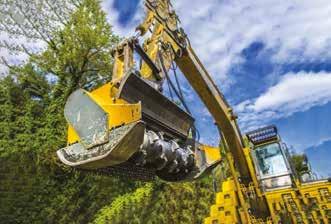
continued on p64

Also, as the engine is so happy to rev, you often find that is has revved all the way to max where the power runs out, so you must be handy with the gear changing to keep steady accelerative progress.
The gearbox is a bit notchy and noisy and in many ways, I prefer five-speed manual gearboxes if you do a lot of country road driving - like for example, from Dollar to Lochgilphead. If you do a lot of motorway work then an automatic gearbox is a better bet providing high top gearing for motorway bashing and comfy country road cruising, with automatic gear changing letting you enjoy the country road and not having to change gears constantly.
I had a Freelander Mark 2 manual for a couple of years, and it was frustrating to drive smoothly on the above-mentioned road. Its engine was noisy until in top gear too! The Discovery 4 replacement with its smooth V6 diesel engine, linked to the lovely ZF eight speed automatic gearbox, is a fantastic alternative for smooth quiet driving, both on motorways and byways.
The Duster’s gearbox does not need to be so noisy, and when I drive the fivespeed Abarth 500 I am reminded of how quiet and precise the Fiat gearbox is. It is actually one of the best gearboxes out there. That said, this Duster is a fine car. I was surprised how nippy it is -though with five people onboard with all their baggage it would have to work hard. Also, for towing the larger 130bhp engine would be no doubt better but it costs £1,500 more and has the same 1,100kg limit for towing a braked trailer.
This 90bhp Journey version reviewed here is priced at £19,795,
with an additional £650 for the lovely orange paint which looks great. The list of standard equipment is extensive and includes auto door locking. On approaching the vehicle, the doors unlock just in time and light up. Also locks just as you walk away too. The engine stop/ start was a bit intrusive, and the horn beeped when you got out to open a gate, which was not always appreciated by the neighbours early in the mornings.
Other standard equipment includes Hill Start Assist, which uses the brakes to hold the car stationary a few seconds for hill starts. Most modern cars have this, and it is a great addition. There is also electronic stability and traction control, driver and passenger airbags, front side bags, rear parking sensors and reverse camera, tyre pressure monitoring and inflating kit, outside temperature gauge, cruise control, sat nav, auto aircon, heated front seats/wing mirrors/front and rear windows, auto wipers, illuminated glove box, 17-inch wheels, and a soft feel leather steering wheel.
I must say I was surprised how well this Duster was equipped. It has everything you need.
A more expensive Extreme version is available but is really only a design exercise with black wheels and some plastic moulding. It does however have the unique option of a lovely Cedar Green paint option. It is only available with the larger engines, and costs £500 extra. A spare wheel for all models is a £300 addition, which is annoying - who does not want a spare wheel anyway?
The rear seats split 60/40 and the boot is a good size at 478 litres with seats up and 1,623 litres with seats down. It is such a shame when down that they
do not fold to provide a fully flat surface. I remember early Subarus had a great interior, as the rear seat bottom tilted forward, and the back rests then fell flat onto the lower floor giving a flat surface and a bulkhead behind the front seats with the rear seat. The fuel tank holds 50 litres.
This lighter Duster does not ride as smoothly as the heavier diesel version but is fine and handles well. The brakes are good, as are the lights. The doors do not feel that heavy duty, but I suppose the lightness and efficiency has to come from somewhere. I got around 40 mpg and the official figure is 45mpg combined but, as with most petrol engines, this figure can vary a lot depending on your speed. The diesels do about 50mpg but do tend to blow their injectors with age.
The Duster is a useful size, being plenty large enough for most purposes but not too big at 4.3m long, 2.05m wide from mirror tips, and 1.69m high. Ground clearance is a very useful 210mm whilst the 4x4 was 117mm.
Later in the year when the all-new Mark 3 model arrives, it will have the option of a petrol 4x4 version. I have seen pictures of the new model and it is very similar in dimensions and looks. With a good set of tyres this 2WD version would still be a useful country car. If it were not for the noisy/notchy gearbox, I would give the Duster 10 out of 10!
Even a decade later, the Duster is a likeable, very well designed and useful vehicle for us forestry folk!
Eamonn Wall Bsc Msc FICfor is a tree, woodland and forestry consultant, landscape designer and Director at Eamonn Wall and Co.
Forest machinery manufacturer Ponsse has announced of new systems to aid forwarder operator accuracy and as it reaches a business milestone.
Ponsse is presenting two new features to support forest machine operators’ daily work and to assist forestry entrepreneurs to follow up on the fleet’s profitability and productivity.
The Ponsse Scale crane system manages load data during all working stages, and the Ponsse High-Precision Positioning solution helps the machine operator know the exact location of the machine and the harvester head.
The new solutions are intended to the productivity and safety
of on-site operation. They ensure that the site is more responsibly completed on budget.
Ponsse Scale
Ponsse Scale is a crane that weighs, sorts, saves load data during all working collected weighing data handling routines easier. measurements ensure all
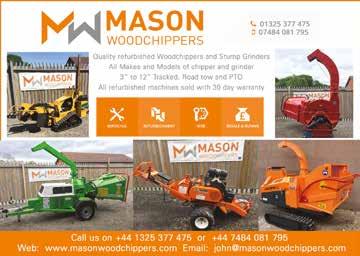
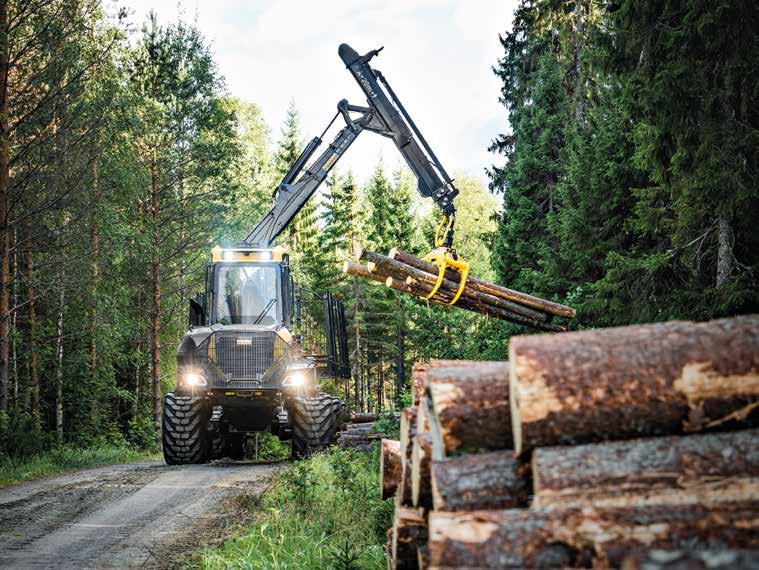






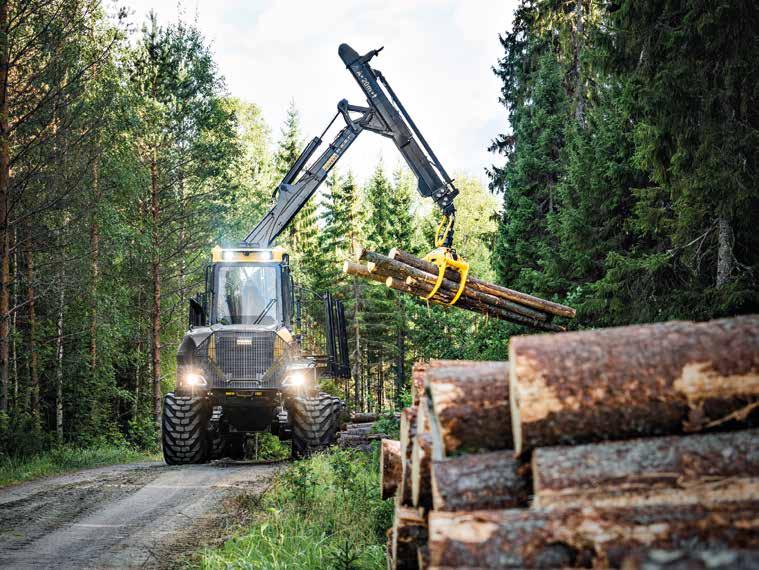
It features full weighing automation during both loading and unloading, with detailed load registration. Whether loads are grabbed in the middle or off-centre does not affect the weight result. Load details, load logbooks and measuring accuracy data are available in easy-toread reports.
Ponsse Scale is designed for weather resistance, with reportedly accurate results in both hot summer temperatures and winter’s sub-zero temperatures.
Ponsse Scale can be installed in all Ponsse forwarder loader models.
Ponsse High-Precision Positioning is a solution that helps the machine operator know the exact location of the machine and the harvester head. This enables the effectiveness of logging operations to be maintained, even in changing conditions.
Utilising industry-leading navigation and location tools, as well as Ponsse’s own advanced technologies such as Active Crane, High-Precision Positioning can raise the reliability bar to a level conventional positioning systems often don’t reach. By defining the exact location of the harvester head and presenting it on a map view, High-

Precision Positioning can significantly improve harvesting productivity.
The solution clearly shows where the operator should harvest and the areas that should be avoided. Every stump location is saved in the production file, and the driving path the harvester creates is clearly visible to the forwarder.
Availability to the UK market for High-Precision Positioning is yet to be announced.
The manufacturer is also presenting a fossil-free material concept load space, becoming the first in the world to show a forest machine part made of SSAB fossilfree steel.
Built at the Vieremä factory, which aims to be carbon neutral by 2025, the SSAB steel load space is fitted to a Ponsse Buffalo forwarder. The load space is designed only for material testing and does not correspond to production models.
The material concept is part of the FORWARD27 ecosystem project, looking to drive investment in the workability, behaviour and characteristics of fossil free steel in forest machine manufacturing.

We are situated in the beautiful county of Northumberland and supply around 15 million bareroot conifer and broadleaf trees per year to a wide customer base. A Plant Healthy accredited grower of major native timber and woodland species including improved Sitka Spruce. Trees can be pre -treated against Pine Weevil if required.
Our team have over 200 collective years experience in growing and nursery production as well as a firm understanding of the forestry industry. Our cold storage facilities ensure our trees are stored at the optimum temperature until you need them. Please get in touch today. No query is too big or small.
Superior planting stock for commercial forestry. Specialist grower of northern UK and Scottish seed zone provenances to suit all planting requirements TreesPlease Ltd, Dilston Haugh Farm, Corbridge, Northumberland NE45 5QY 01434 633049 sales@treesplease.co.uk www.treesplease.co.uk



The leading project developers for the Woodland Carbon Code, CarbonStore is able to navigate all the technicalities and details associated with securing the necessary accreditation.
100% success rate in validating and accrediting projects under the Peatland and Woodland Carbon Codes, with ongoing checks to certify the project’s standards.
Partner with CarbonStore to help deliver the best service for your clients.
Get in touch with David McCulloch:
t: 07500 950832 e: info@carbonstoreuk.com w: carbonstoreuk.com




A Perthshire-based business has confirmed
Laurent Bienfait Woodlands Services (LBWS) announced at the end of the Spring 2024 forestry planting season that they have reached an historic landmark for the business: planting 100 million trees in Scotland.
Owner and Managing Director, Laurent Bienfait, said: “We believe this threshold confirms our position as a market leader, planting significantly more than the rest of our market. I would like to thank the clients who entrusted this mammoth task to us and our skilled workforce for their professional commitment to fulfilling clients’ expectations over the years.”
LBWS was established in June 2009 by Laurent, who has traded continuously for over 30 years in the industry. The business, based in Doune, employs over 20 personnel with further support from sub-contractors.
Clients range from national operators, such as Scottish Woodlands, Tilhill Forestry, and Forestry and Land Scotland to many privately owned estates throughout Scotland.
Many of those clients have been effusive in their praise of the business.
Charles Bushby, Scottish Woodland’s Central Region Director confirmed: “LBWS has been planting trees for me since the late 1990s and is one of the company’s favoured contractors. Planting of the 100 millionth tree this season is a testament to Laurent’s contribution to the forestry sector and I would hope that he continues to reach other milestones over the next few years.”
Tilhill Regional Manager Andrew Vaughan also commented that LBWS is “one of the best contractors I’ve worked with for woodland creation. They’ve planted many sites for us, some with over a million trees. Not only do they bring vast experience and attention to detail, they can commit resources to get the job done and carry on with the maintenance. I’ve been very impressed, and I wish the business well with many more years in the industry.”
LBWS operate throughout Scotland, from Thurso to the Borders, and have also undertaken a project in Newcastle.
Fenning Welstead of Goldcrest Land & Forestry Group added: “It’s 30 years since I first met Laurent [and his] efforts have become ubiquitous across Scotland’s forests - his ability to recall details of planting programmes is a treasure chest of practical knowledge.
“I understand that LBWS has just

Sylvestrus Ltd has reached its 20-year anniversary this year and has managed to plant millions of native and productive trees from its base in Inverness.
Founded in 2004 by Dietrich Pannwitz FICFor, Sylvestrus Ltd had had the privilege to serve many community woodlands, private estates, farmers/crofters and the public. It has provided tens of thousands of tonnes of sustainably harvested timber to local sawmills and made lots of people happy with supplies of Christmas trees and firewood.
Dedication to serving its customers, assistance by suppliers and contractors and long-time customers, and working long hours have enabled Sylvestrus Ltd to grow from just a small outlet to what it is now. With a wood processing yard and Christmas tree business, plus a new Finnish-made office at the Munlochy junction on the A9, all forestry needs are covered.
Jamie Hendry, General Manager for Euroforest’s North Region, attested: “In our dealings with Sylvestrus Ltd over the years we have come to recognise the outstanding service they provide for their client, with a hands on approach to
planted its 100 millionth tree and congratulate Laurent and his team for such a massive contribution to the industry, nurtured by their many years of highly valued expertise.”
Reflecting on this latest achievement, Laurent continued: “Our planting has included some substantial woodland projects, creating valuable commercial woodland and rewilding some environmentally critical projects. We have actively contributed to several Scottish Government initiatives as we
forest management and silviculture that is often lacking in the larger, ‘corporate’ forest management companies.
“Their silvicultural knowledge, allied to a passion for the science and art of growing and managing forests, has ensured that once Sylvestrus Ltd gain a client, they keep them for the long term.”
Sylvestrus Ltd Director Dietrich Pannwitz said: “Whether it’s grant applications, mapping, fencing, tree planting, timber harvesting or constructing paths and playgrounds for community woodlands, there have always been exiting projects and never a dull moment.
“We complete in time and on budget and are proud of the sustainable, productive forestry we provide. Along the way we have met ‘treemendous’ people and have seen the best of the Scottish landscape - from Orkney (windy, good for Sycamore!) to the Borders (rolling hills good for productive conifers).
“We would like to thank all customers, suppliers, family and friends, and statutory organisations for their help making this possible.”
fully appreciate the economic and environmental benefits accruing to Scotland with the establishment of such significant areas of forestry.
“Specifically, tree planting, especially on our scale, contributes to the fulfilment of the political and environmental ambitions of government and responsible landowners. Increasing and managing woodland significantly reduces the impact of climate change and improves water quality, besides producing significant amounts of carbon storage.”




Woodland & Land Management in the Highlands & Islands



• Surveying (Soils, Woodland Suitability, Plant Health, Timber Volumes/Values, Protected Wildlife etc.)
• Mapping
• Production of Long-Term Forest Plans (Substantially Grant Aided)
• Felling & inning Licences
• Grant Applications (for new woodland creation) (Rural Development Scheme, Carbon Challenge Funds, Machinery Improvements, Training etc.)
• Environmental Impact Assessments
• Assistance with Renewable Energy Projects (e.g. Compensatory or Screening Planting)
• Landscape Illustrations
• Database & Compartment Records
• Woodland establishment, fencing, forest maintenance
• Budgeting & Budget Control
• FSC Auditing
• Land & Woodland Evaluations
• Tree & Development Site Surveys & Maintenance Programmes
• Supervision of all types of operations
Sylv trus Ltd. has provided us with cellent woodland servic for over 20 years. have managed to s ure government funding for a number proje s. All contracting was ca ied in time and on budg .












Wood panel manufacturer Egger has reaffirmed its ongoing commitment to sustainable forestry as part of a circular timber and wood product economy in the UK.
With current Government planting targets not being met, the wood panel industry, aligned with the forestry sector and other key stakeholders, continues to advocate the necessary investment in the UK to create a more self-sufficient productive timber supply. This critical investment will support jobs and help to ensure sustainable, lower carbon construction, and protect long term material supply to key commercial, construction and furniture industries across the UK.
Sustainable and productive forestry creates a vibrant rural economy, providing tens of thousands of skilled, well-paid jobs across the UK. The forestry industry’s contribution to the economy, particularly to the rural economy, is significant, supporting jobs, generating gross output, and contributing to GDP.
Directly and indirectly, forestry activity in the UK was shown to support some 33,000 jobs, and to generate a Gross Value added (GVA) across both primary wood processing and forestry of £2.85 billion in 2023.
Egger supports forest regeneration through multi-species tree planting, improving the biodiversity of forests and
has a buying strategy that focuses on sourcing 90% of its wood supply from within 100 miles of its plants.
Max McLaughlan, Head of Wood Purchasing and Forestry at Egger (UK), emphasised the importance of tree planting, stating: “As a society we need wood, to build and furnish our homes, to package our goods, to write and print on, and in the UK, coniferous forests fulfil some of that need.
“A modern forest is made up of many tree species, as well as open space, and provides multiple benefits for everyone. A place to walk, ride your bike and enjoy nature, but also to grow the timber that we all need.
“At Egger we use some of that timber to make useful and long-lived products that can be recycled at the end of their use to keep the carbon locked up for decades. We all need wood; we should grow much more of it.”
The UK grows less than one-fifth of the wood it uses. In fact, in 2021, Britain was the third largest net importer of wood in the world.
Andrew Laidler, Sales Director, Decorative Products for Egger UK & Ireland, made the case for planting more trees to support the UK economy: “The wood-based panel industry is commercially and environmentally significant to the wider UK economy. With touch points across critically important commercial and consumer market sectors, it is an essential supply chain vital for economic success
and environmental security for the country.
“It is imperative that the government recognises the importance of supporting and improving productive timber planting targets, in order to maintain timber availability to important markets that simply could not exist without supply from the wood panel industry, which in turn could not survive without a reliable timber supply.”
Egger is committed to promoting sustainable forestry. The wood used in production comes from 100% verified legal and controlled sources according to ISO 38200. Certification (by independent certification bodies FSC® (Forestry Stewardship Council) and PEFC plus ISO38200) ensures Egger’s conformity with environmental and social standards.
Sawmill by products, namely hackchips, sawdust and industrial roundwood, are used in its chipboard production plants based in Northumberland and Ayrshire, alongside recycled wood, which is collected and sorted by its subsidiary company Timberpak. These by products would otherwise be burnt, used as animal bedding, or go to landfill.
Egger Group has signed up to the UN Sustainable Development Goals and also has its own ambitious climate strategy to drastically reduce its climate-impacting emissions (both in its own production processes and those up and down the supply chain), with the ultimate target of Net Zero 2050.

Egger remains committed to these pledges and sustainable forestry practices, planting to support
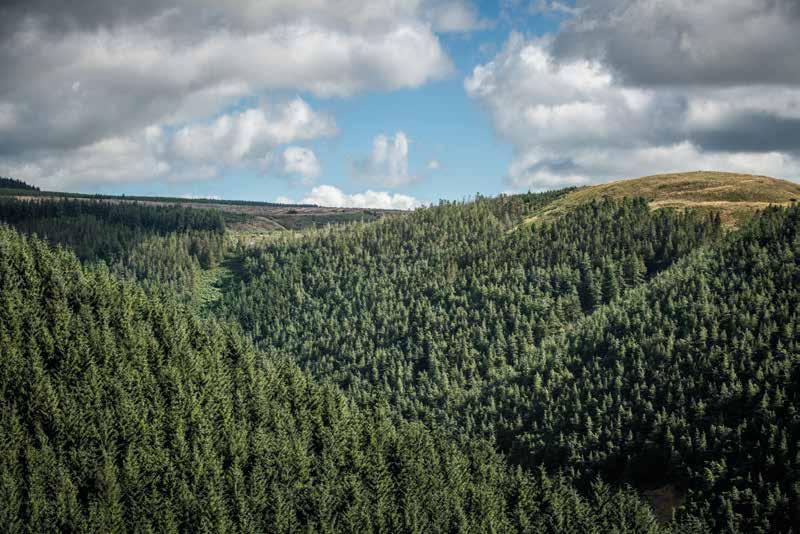
Confor Chair
thoughts on save the world from climate breakdown’ a new book exploring potential of timber
“Outside man’s dog it’s began a Groucho came to mind when the recent publication, former MEP and Affairs for the Brussels-based Woodworking Industry
Aside from a dog, much qualify as a
Many of you reading will know that the is responsible for global emissions, fossil fuels used to commonly) cool over 10% of emissions materials we use buildings, notably
The opportunity forestry sector to reduction, through timber and wood growing. And that carbon sunk in the the planet, and the the energy sector!
Whilst the book in the built environment engineered timbers and concrete in buildings high (albeit on concrete foundations) it is the question of the source of timber that remains the most important; namely are there enough sustainably sourcable trees to fuel this revolution?

Paul is clear that in Europe we have enough timber to meet our current needs. However, if we are indeed to revolutionise our built environment then many more trees will be required, and they need to be in the ground round about now. It is here that the challenges begin to take shape.
To meet the demand Europe’s forestcover would need to expand by 10%. To achieve this, farmers would be required to dedicate a minimum of 10% of their land to tree growing. He believes that this can be achieved without any reduction in food production (though Paul does advocate a less meat-rich diet, and he’s no fan of hill sheep) or in any way compromising biodiversity. Paul also believes there is a
It is estimated that agroforestry covers some 3% of UK farmland and examples of tree planting range from tree lines across productive farmland which did not connect with the field boundaries, through to buffer strips along the field margins.
In truth these models seem more about augmenting the income of farmers (as well as associated benefits – stabilising flood plains, reducing water run off etc.) than creating any significant reserve of commercial timber - but a journey of a thousand miles begins with a single step. Timber! Is a thought-provoking book. High on vision, with plenty of interesting examples of the role of timber can play in the battle to tame climate change. If it has a shortcoming, it is that the route map toward the broad sunlit uplands is not always clear. I suspect farmers will need quite some convincing to change
timber board sector; less a question of asking what the building sector wants, more a reality of telling the building sector what it will get. That approach is one of the principal reasons for current problems in the forestry sector.
The reality is that the change required to increase the timber in the built environment and to enhance tree planting across the nation won’t happen by accident, it will need early dialogue with the key players (notably foresters) a plan (or several), sensible funds, clear-sighted committed government(s) and able drivers of the change. This book could well prove part of the solution.
Let’s give the last word to another of Groucho’s book reviews: “From the moment I picked up your book until I put it down, I was convulsed with laughter. Someday I intend reading it.” Paul’s book is certainly in the latter category!



Do you want to live and work amidst some of Scotland's most breathtaking forests? Do you have a passion for forest management and a desire to contribute to the conservation and development of our woodland heritage?
RTS Forestry is excited to announce an opportunity for a dedicated and experienced Woodland Manager to join our growing team in Inverurie.
Thisroleoffersafantasticopportunityforthoselookingtotakethe nextsignificantstepintheircareerintermsofforestmanagement responsibilitiesandtheopportunitytoworkwithahighdegreeof independencewithsupportfromourseasonedseniormanagers.
As a Woodland Manager in RTS, you’ll be entrusted with the care and management of long-established woodlands, many of which present unique silvicultural challenges as they transition to lowerintensity systems. Your work will take you regularly into the stunning Cairngorm National Park, and our portfolio includes five Native Pinewoods. When the opportunity arises, you’ll also collaborate closely with our harvesting team to ensure compliance with the UK Woodland Assurance Standard (UKWAS).
In addition to managing existing woodlands, this role offers the chance to develop new woodland creation projects, supported by various grants and initiatives such as compensatory planting and the Woodland Carbon Code. You’ll also be involved in conducting woodland impact assessments through consultancy services, particularly in the energy and transmission sectors, ensuring all relevant regulations are met and maintaining strong relationships with clients and stakeholders.
At RTS Forestry, we value the unique skills and talents of each team member. We’re committed to supporting your professional growth, including assisting you in gaining membership in the Institute of Chartered Foresters or other relevant professional bodies. We also encourage continued training in areas that align with your specific interests.
If you’re ready for a new challenge and want to make a meaningful impact on Scotland’s woodlands, we’d love to have you on our team. Apply today to join a group of like-minded professionals who are as passionate about sustainable forest management as you are.
Additional company benefits such as:
Private health care
Pension contribution
up to 31 days of holidays
Participation in the company’s annual bonus scheme
Lesley.Mackenzie@rtsforestry.co.uk • 01764652858 www.rtsforestry.co.uk










•
With recent backlash from rural communities in Scotland about a lack of consideration around new build heating regulations, proper representation and consultation on similar issues has been a hot topic. Forestry Consultant Andrew Heald MICFor shares his thoughts on the importance of our sector’s input on a myriad of topics, and his experiences in trying to secure a seat at the table.
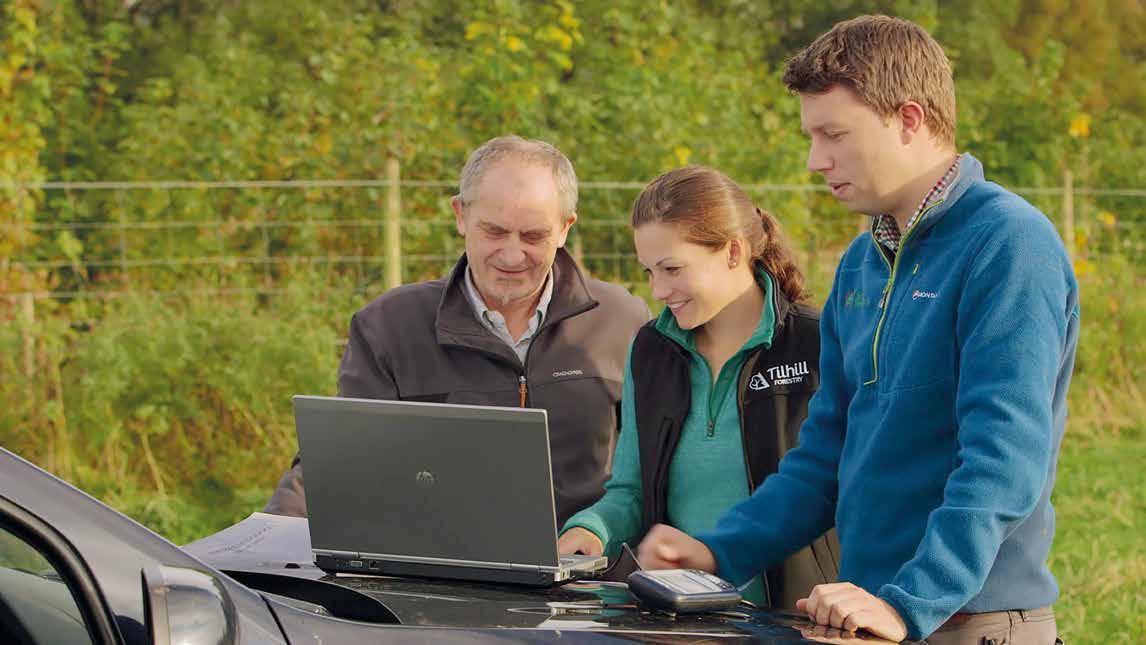
There has been much discussion recently in Scotland about tighter regulations on wood burning (and fossil fuel burning) stoves and boilers in new build properties. This is part of new regulation which require all new Scottish homes and buildings to install “climate-friendly heating systems”. Whilst there is broad agreement that these regulations are appropriate in urban parts of Scotland, there is concern about the potential impact in the most rural areas, particularly those with unreliable electrical supply, and where an emergency plumber might require a ferry trip in rough weather.
The new regulations had been consulted and there were exemptions which allowed wood fuel boilers as a backup, however many people still felt that the needs and concerns of people living in the most rural areas hadn’t been properly considered.
This has in turn led to a lot of press and social media coverage about urban and central belt Scotland not understanding the needs of rural, and particularly island, communities.
An April article in the Glasgow Herald (‘Leading architect slams ‘crazy’ ban on wood-burning stoves’ by Andrew Learmonth) sums things up well:
Donald Macsween, a crofter and independent councillor for An Taobh Siar Agus Nis on Lewis said the reality of living in rural areas had not been taken into consideration by ministers.
“You can build your new home with an air source or a ground source heat pump or whatever, but what happens when that breaks down, which it inevitably will?
“What if it breaks down between Christmas and New Year when it’s hard to get somebody? What if the part that you’re looking for has to come in on the ferry, and we don’t know what the ferry situation is going to be like?”
“The problem that I see is that there is nobody in the room with opinions like me or a perspective like me,” he added.
That last sentence resonated with me and reflected recent (for the last 20 years)
concerns about the inclusion of forestry and timber people in discussions about land use.
I’m sure that the organisers of round table discussions, or of consultations, or of boards of inquiry are all confident that they have carefully chosen the best people with a broad understanding of the issues. However, for many wider stakeholders, whether concerned about wood burning stoves or land use frameworks, it’s important that we see people “in the room with opinions like me or a perspective like me.”
It also reminded me of the late 1990s and the early days of forest certification and the need to have long term forest management plans. These both required formal public consultation and engagement with stakeholders.
At the time as a young forest manager, I saw public consultation as an event and a box to be ticked. We didn’t really know how to run constructive meetings, and I attended several that were very much not constructive and probably caused more problems than they resolved. Over time, colleagues learnt lessons and we held drop-in events rather than often confrontational village-hall meetings.

Some of us also realised that public consultation was more about how we worked on a regular basis rather than just a one-off event. Delivering a Christmas Tree to the local primary school, attending community council meetings or hosting a sponsored walk were, and are, also part of long-term consultation and engagement.
The forestry sector still has a lot to do regarding working and creating value with communities. We also need to communicate much better about the multiple connections between conifer forestry on the hillside, and the homes we live in and products that we all use every day.
Forestry challenges abound lie ahead for the UK: in the next 20 years there will be rising timber demand and falling timber availability.
Many people’s perception of what is occurring is often at odds with this; people tend to think that has been a significant amount of new commercial planting, and of planting in general. The reality is that we are only reaching 50% of the CCC recommended 30,000 hectares per year.
Of greater concern is that in some areas of the UK the area of conifers is reducing, due to large areas of commercial crops not
being restocked after harvesting and being cleared for windfarms.
There is a rising interest in (and support for) agroforestry, which is great to see. Though it may assist in de-carbonised farming, stock shelter and improving wildlife connectivity, but it is not going to produce the standard carcassing timber required in a construction industry increasingly looking to build with wood.
There is often misunderstanding about what is being planted and forest management in general. Over the last 12 months I have heard senior representatives from major NGOs publicly suggest that:
• Most of the new conifer planting in the south of Scotland is for carbon offsets.
• Using home-grown timber in construction is a less climate friendly choice
• Nearly all the harvested timber in Wales is used for making pulp.
• Landowners can plant whatever trees they want, wherever they want.
• Most of the timber that’s harvested in Scotland is used for biofuel and paper.
None of these things are true and can be dismissed quite quickly with a few minutes’ research. However they were still stated, and heard by a wide range
of people who would assume that these senior representatives were speaking accurately.
We also routinely see articles in the media about forest management, written by journalists often relying on a press release and - if we are lucky - it might contain a penultimate paragraph where “a spokesperson for Scottish Forestry said that… “
Whether the subject is carbon measurement or growing quality timber or agroforestry or wildlife and biodiversity or effective tree establishment or tree choice or pests and diseases - foresters will bring a wealth of professional experience and knowledge to the discussion from their perspective and experience inside the woods.
Can you imagine reading an article about teaching, that didn’t contain any quotes from actual teachers or teaching assistants?
I try to call these articles out when I see them and attempt to contact the journalists involved to offer a quote or a sense check for any future article – but I rarely hear anything further.
Similarly, after a recent committee meeting on carbon and natural capital at the Scottish Parliament, I spoke to several MSPs at the event, shared my contact details and offered to chat about the issues – I’ve heard nothing since.
After working in the forestry sector for 25 years, I am still surprised that foresters (especially foresters working in the private sector) are routinely ignored and excluded from events and articles about land use, particularly when timber and woodland creation is so high on the agenda.
To tackle the multiple challenges ahead – the climate emergency, the nature emergency, the bioeconomy and issues of chronic under supply of housing in rural housing and steady employment – we need the right people around the table, and we need proper and meaningful engagement with everyone that may be affected or impacted. To decarbonise our economy, we will need more timber and more fibre, and that will mainly come from coniferous forestry plantations.
That engagement with foresters isn’t just an email or a multiple-choice questionnaire, or to be fobbed off with “but we’ve spoken to the Woodland Trust and/or Scottish Forestry” – it’s about listening and being heard, and making the multiple connections between how we manage our land and a just transition to a nature rich and lower carbon bio-based economy.
To borrow a quote from the SCVO (Scottish Council for Voluntary Organisations): “Nothing About Us, Without Us, is For Us!”


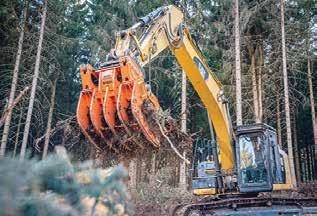





























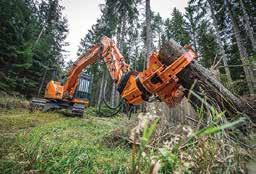





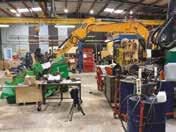




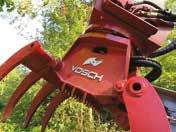





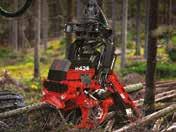


Professor Julian Evans OBE has been presented with the Royal Forestry Society Gold Medal in recognition of his remarkable impact on British forestry.
Researcher, woodland owner, and regular Forestry & Timber News contributor Professor Julian Evans OBE DSc FICFor has been awarded the prestigious Royal Forestry Society (RFS) Gold Medal for distinguished service to forestry.
Julian was nominated for the award by RFS Vice President, Alison Field. She said: “Throughout his career, Julian Evans has and continues to make an outstanding contribution to forestry both in the UK and overseas. He is tireless in his support of the profession and in encouraging others with his passion for forests.
“I have no hesitation in recommending Julian for receipt of the RFS Gold Medal not just for his considerable support of the RFS, but for the many, many lives that he has touched and helped throughout their forestry careers.”
Julian’s passion for forestry was ignited at age 14 when he was awarded the forester’s badge at his local Scouts. That helped direct his academic pursuits and, in 1968, he graduated from Bangor University before undertaking a PhD exploring the sustainability of plantations in Swaziland.
In 1971, he joined the Forestry Commission as a District Officer at Neath in South Wales, then moved into research at Alice Holt Lodge, specialising in the silviculture of broadleaved woodland.
During his time at the Forestry Commission, Julian took two spells of unpaid leave to work at the University of Technology in Papua New Guinea in the 1970s, and with the International Institute for Environment and Development (IIED)

in the mid-1980s.
By the time he left the Forestry Commission in 1997, he had worked his way up to Chief Research Officer and Head of Station at Alice Holt. For the next decade, Julian lectured as a Professor at Imperial College London while continuing his research in plantation sustainability.
As a forest scientist, Julian is the author of more than 100 research papers and has written or edited some 16 books on treerelated subjects. His books on broadleaved silviculture continue to be deemed essential reading for students and young foresters.
Julian has held several honorary
positions in British forestry, most notably Chair of the Department for International Development’s forestry research advisory committee, Chair of the Commonwealth Forestry Association, President of the Institute of Chartered Foresters, and Chair of the Forestry Commission’s Expert Committee on Forest Science.
In 2017 he was made an Honorary Fellow of Bangor University. Julian was appointed OBE in 1997 for services to forestry and the Third World.
Julian’s family has owned and managed a 30-acre woodland in Hampshire for more than 30 years. Through popular videos on YouTube, features on various BBC Radio 4 programmes, and articles in this magazine, Julian offers generous guidance for new woodland owners on how to manage woods.
He has also worked closely with Woodlands.co.uk over many years to prepare woods for new owners and help them become better equipped to be good stewards.
“His wood is an exemplar of good silviculture, a delight and inspiration to anyone who visits,” said Alison.
As a dedicated and long-term member of the RFS, Julian’s contributions to the organisation are far-reaching. He is a valued member of the editorial panel for the Quarterly Journal of Forestry.
Additionally, Julian has led one-day courses for RFS members in his Hampshire woodland, contributed to meetings of the Southern Division and delivered valuable updates on Forest Research as a member of the RFS Council.
A Trees for Life and Woodland Trust Scotland initiative to increase the country’s availability of rare native tree seeds has smashed its first-year target.
A team of more than 80 volunteers has collected 2.2 million seeds since last August, enabling 1.5 million trees to be grown for rewilding across Scotland, hugely exceeding an initial target of 500,000 trees.
The project focuses on rare tree species from Scotland’s surviving fragments of ancient woodland, including on Skye, the Western Isles and Orkney, and west coast temperate
rainforest. With the trees often in remote locations, the new network of volunteer seed collectors is creating access to local woods and local knowledge.
Roz Birch, the Tree Seed Collection Project’s Volunteer Coordinator, said: “his project is preserving genetically precious and rare species – in turn helping restore native ancient woodland and rainforest, and providing homes for wildlife from wood ants to pine martens.
“It’s inspiring to witness the passion of the amazing volunteers who are
making this ‘citizen science’ rewilding project so successful, as well as their joy at knowing the seeds they collect will benefit rewilding to tackle climate breakdown and biodiversity loss.”
Once collected, the seeds are processed and tested, then sent to nurseries for sowing and growing on.
The young trees will be available for planting at sites across Scotland this autumn – including Woodland Trust Scotland projects to restore Scotland’s rainforest, and Caledonian pinewoods at sites in Argyll and Bute, Lochaber, and the Trossachs.
Professor Julian Evans OBE FICFor

They say a picture is worth a thousand words. Julian Evans shares three photos from his woodland and the deeper meaning captured in each.
My family rightly complain that I’m always taking pictures of trees and woodlands and don’t record family life, holidays and the like as often as I should. I can’t argue, but today I want to share three woodland photographs taken in the past year and share what we can learn from them.
1. HAZEL COPPICE IN ROTATION
Near where I live, an area of hazel coppice with only a few widely scattered oak standards has been worked on a 7–8-year rotation ever since I first came across it 40+ years ago… and doubtless long before that.
Hazel quality is good, coppice regrowth pretty free of deer browsing, and the end products of pea sticks, bean poles, hedging stakes, hurdle slats and thatching spars (gads) are all in steady demand. Here is a sustainable crop and a sustainable craft.



2. REMARKABLE EUCALYPTS IN THE WRONG PLACE
Forest Research in the early 1980s, led species research into the enormous eucalyptus genus to identify cold hardy ones able to cope with our climate. The earliest trials were exploratory, including one in this picture in the middle of New Forest.
That is not the place today where would establish such an experiment with exotics, but it does show how astonishingly well the trees have grown in their 43 years. And the research did reveal that species in the E. gunnii group, the snow gums and one or two others like E. nitens, had hardiness to make further testing worthwhile.
My third photograph is remarkable. On the left is a well grown 67-year-old beech tree, in the middle is 12-year-old beech coppice that grew after the last thinning (when the stump was 55 years old), and on the right is another 67-year-old beech tree that had been suppressed all its life.
The photo is remarkable because probably only beech has sufficient shade tolerance for coppice to develop under a dark canopy and for a ‘runt’ to survive like a bonsai until released. Does that mean that even-aged beech stands are good candidates for continuous cover forestry (CCF)? Answers on a postcard! 1 2 3

• Business Management;
• Forestry and Woodland Management;
Forest Service – Northern Ireland Civil Service
Forest ServiceNorthern Ireland Civil Service
Based – Northern Ireland with hybrid working available
Office Location –Enniskillen (Co. Fermanagh), Northern Ireland
Closing Date – Friday 9th August 2024
Closing DateFriday 13th September 2024
Forest Service is an Executive Agency of the Department of Agriculture, Environment and Rural Affairs (DAERA) in Northern Ireland. Forest Officer (Grade III) posts make a significant contribution to DAERA’s vision of “Sustainability at the heart of a living, working, active landscape valued by everyone.” We are committed to enhancing the skills and capacity of Forest Service to deliver a diverse portfolio, as we seek to protect and enhance our environment; improve its sustainability, grow a vibrant economy; and support the development of thriving rural communities.
Forest Service is an Executive Agency of the Department of Agriculture, Environment and Rural Affairs (DAERA) in Northern Ireland. The Head of Forestry Division is a senior position within the Agency and will be influential in leading and implementing all aspects of forestry work across the sector, providing assurance and advice and maintaining the confidence of industry and other stakeholders.
The Head of Forestry Division will be responsible for the development and delivery of fully integrated strategic policies and operational forestry functions, on behalf of DAERA, to provide a wide range of ecosystem services and benefits from existing and new forestry assets and programmes.
Forest Service is a multidisciplinary organisation, whose staff are drawn mainly from forestry, agriculture, industrial and administrative disciplines, and is currently seeking to fill a number of Forest Officer Grade III full-time vacancies. Applications are invited from candidates who have forestry knowledge, skills and experience, and who meet the eligibility criteria, to apply for this opportunity.
The successful candidate will make a significant contribution to DAERA’s vision of “Sustainability at the heart of a living, working, active landscape valued by everyone.” At the heart of this vision is offering a great place to work, with engaged people delivering professional services to meet society’s needs.
Forest Service offices are located in Enniskillen (County Fermanagh), Newry (County Armagh) and Garvagh (County Londonderry). Forest Officer III is a mobile grade and successful candidates will be expected to work in forests and other operational bases, including DAERA offices, throughout Northern Ireland during their employment. The Northern Ireland Civil Service Hybrid Working Policy arrangements will apply which may involve a mixture of working from the assigned base, other office locations and home-working subject to business need.
The post is based at Enniskillen, County Fermanagh. A hybrid style of working applies, in the context of the Northern Ireland Civil Service Hybrid Working policy, which blends working in the office, remote locations and at home.
• Development of forestry policy options and long term forestry strategies and plans to ensure appropriate forestry contribution to the NI Climate Action Plan, including meeting afforestation and peatland restoration objectives.
Forest Officer IIIs are responsible for leading and safely managing forestry activities across the range of forestry and plant health services. The duties vary between posts, and will include:
Forest Officer IIIs are responsible for leading and safely managing forestry activities across the range of forestry and plant health services. The duties vary between posts, and will include:
• Arboriculture and Urban Woodland Management;
• Environment, Biodiversity and Wildlife Management;
• Recreation Management and Planning;
4. Have at least 3 years’ experience in successfully leading and directing a range of work programmes, involving a diverse range of senior management level** stakeholders and staff within a medium sized and complex organisation***.
• Planning, commissioning and controlling forestry operations including day to day management of staff and contract work;
• Planning, commissioning and controlling forestry operations including day to day management of staff and contract work;
• Management and development of staff;
• Management and development of staff;
• Influencing the development of external policies, strategies, UK Forestry Standards, best practice and Certification requirements.
• Public Consultation and Participation;
• Harvesting, Marketing and Utilisation;
• Forest Engineering;
• Policy Development and Strategic planning;
• Timber Conversion;
• Coordinating activities on the Forest Service estate to secure Forest Service interests in relation to public safety and protection of forests;
• Coordinating activities on the Forest Service estate to secure Forest Service interests in relation to public safety and protection of forests;
• Regulation of forestry related legislative matters and provision of Forest Authority role.
• Tree Nursery Management;
• Forestry and Arboricultural Research; and
Salary will be within the range £65,409£71,353 within which pay progression will be performance related.
• Forestry and Arboricultural Teaching.
• Developing and maintaining good relations with customers, landowners and forestry stakeholders;
• Developing and maintaining good relations with customers, landowners and forestry stakeholders;
• Stewardship of the forest estate and sustainable management of public forests, including protection of the property and assets.
As Head of Forestry Division within the Northern Ireland Civil Service (NICS) you will enjoy:
• A senior professional leadership role within the forestry sector.
• Use of IT systems in budgeting, procurement, reporting, surveying, data collection and analysis, including working with geographical information systems (GIS) for the purposes of disease control, business planning, forest management, timber supply, policy development and customer service;
• Use of IT systems in budgeting, procurement, reporting, surveying, data collection and analysis, including working with geographical information systems (GIS) for the purposes of disease control, business planning, forest management, timber supply, policy development and customer service;
• Development of marketing strategies and contract supply arrangements and oversee the management and marketing of timber sales to meet strategic and best-value objectives.
• Inspecting and enforcing legislation for the purposes of aid schemes, forest protection and public access to forests, felling control, environmental protection and plant health;
• Inspecting and enforcing legislation for the purposes of aid schemes, forest protection and public access to forests, felling control, environmental protection and plant health;
• Secure and manage appropriate budget and resources to ensure delivery of policies, strategies and operational plans, including development and service delivery through partner providers.
• Providing professional and technical input to policy development; and
• Providing professional and technical input to policy development; and
• Driving official vehicles and operating machinery and equipment.
• Driving official vehicles and operating machinery and equipment.
Applicants must by the closing date of applications:
3. A full and current UK driving licence and have access to a form of transport which will permit them to meet the requirement of the post in full.
• Career progression opportunities within the Department and wider Northern Ireland Civil Service.
• The NICS Hybrid Working Policy – provides flexible ways of working including a blend of home and office working.
Salary will be within the range £35,996£36,738 within which pay progression will be performance related.
• Generous Annual Leave and Bank Holiday Allowance.
As a Forest Officer within the Northern Ireland Civil Service (NICS) you will enjoy:
• Attractive Northern Ireland Civil Service Pension (defined benefit career average pension scheme).
• An annual leave allowance of 25 days, increasing to 30 days after 5 years, in addition to public and privilege holidays.
• An attractive pension package.
For more detailed information and to apply, please go to www.nicsrecruitment.org.uk
• Access to NICS career pathways and job opportunities.
By the closing date for applications, applicants must possess:
By the closing date for applications, applicants must possess:
1. A degree in Forestry or another educational qualification* that has been assessed by the Institute of Chartered Foresters (ICF) to meet a minimum requirement of 5 points
1. Possess a degree in Forestry or another educational qualification* that has been assessed by the Institute of Chartered Foresters (ICF) to meet a minimum requirement of 5 points. (*These qualifications may include those acquired outside the UK.)
1. A degree in Forestry or another educational qualification* that has been assessed by the Institute of Chartered Foresters (ICF) to meet a minimum requirement of 5 points
AND
*These qualifications may include those acquired outside the UK.
*These qualifications may include those acquired outside the UK. AND
AND
2. Hold current Chartered Forestry or Chartered Arboriculturist status through Professional Membership of the ICF or be a current member of a recognised professional forestry body.
2.a. At least Associate membership of the Institute of Chartered Foresters (ICF); or be a technical member of another recognised professional forestry body; OR
2.a. At least Associate membership of the Institute of Chartered Foresters (ICF); or be a technical member of another recognised professional forestry body; OR
2.b. At least 10 months practical experience** actively working within any of the following ICF competency areas:
3. Have at least 3 years’ experience of strategic decision making and policy development at a senior management level** within a medium sized complex organisation***.
2.b. At least 10 months practical experience** actively working within any of the following ICF competency areas:
For more detailed information and to apply, please go to www.nicsrecruitment.org.uk
Completed application forms must be submitted no later than 12:00 noon (UK time) on Friday 13th September 2024.
Completed application forms must be submitted no later than 12:00 noon (UK time) on Friday 9th August 2024.
Applications from females, young people (people under the age of 35), people with a disability and people from minority ethnic communities are particularly welcomed for this post.
Applications from females, young people (people under the age of 35), people with a disability and people from minority ethnic communities are particularly welcomed for this post.
The Northern Ireland Civil Service is an Equal Opportunities Employer.
The Northern Ireland Civil Service is an Equal Opportunities Employer.
ALL APPLICATIONS FOR EMPLOYMENT ARE CONSIDERED STRICTLY ON THE BASIS OF MERIT.
ALL APPLICATIONS FOR EMPLOYMENT ARE CONSIDERED STRICTLY ON THE BASIS OF MERIT.
All queries can be directed to HRConnect by:
All queries can be directed to HRConnect by:
Email: recruitment@hrconnect.nigov.net
Email: recruitment@hrconnect.nigov.net Telephone: 0800 1 300 330
Telephone: 0800 1 300 330




This issue’s photos were kindly submitted by Mark Baker, Forestry Operations Manager at Christies (Fochabers) Ltd. They show the nursery’s fleet vehicles, ready for dispatching trees to customers all over Scotland and beyond. Christies of Fochabers has been a family-owned business in Morayshire since 1820 - “when the first seed was sown”, as emblazoned across the sides of the trucks pictured here.
Seven generations and over 200 years later, Christies employs dozens of staff across five sites. The nursery grows a variety of species and has an annual production of around 22 million trees.
Though forestry supply makes up most of the main business, Christies has also operated a popular Garden Centre since 1982.
Forestry in Pictures is a regular feature in FTN. For every issue, we select the most impacting photograph sent by a reader. If you have a photo you would like to see published here, please send your file to ftn@confor.org.uk Please include your name, a short comment text to go with the picture, and an image credit.
Photos should relate to forestry and timber and be of high-quality (minimum resolution 300dpi). Exceptional pictures might be considered for the front cover of a future FTN issue. By submitting a picture to Forestry in Pictures you give Confor permission to use the file for non-commercial purposes in Forestry and Timber News or the Confor website. Photos will always be credited.
In October’s issue we will be reviewing this year’s APF show and focusing on Construction. Remember that FTN is your magazine – get in touch if you want to suggest editorial or give us feedback on articles we have published in the past. Confor members, send us your company’s news updates or pitches for feature articles.












